April 11, 2021
Martha O'Kennon
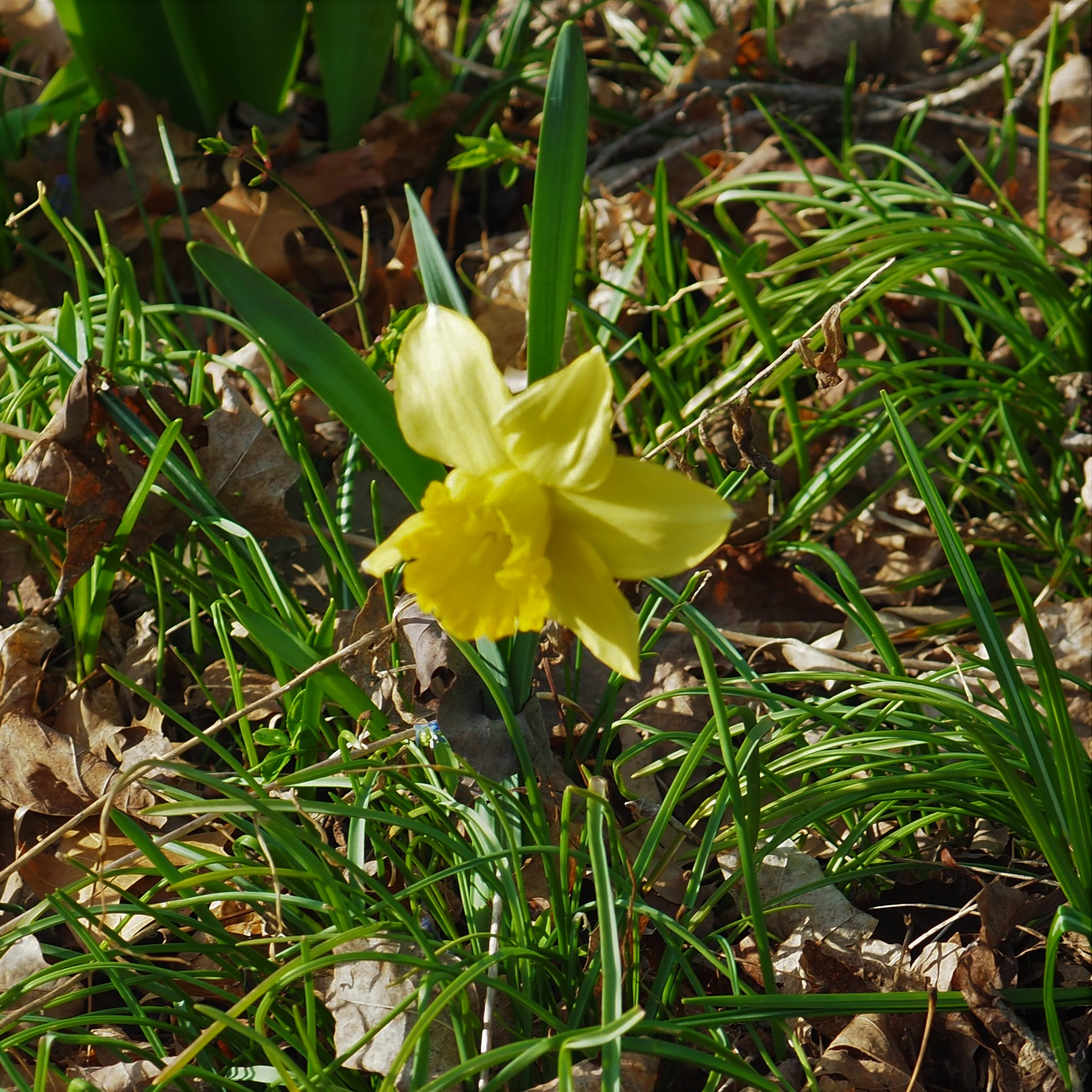


A week and a half into April, the temperatures have been so warm that everything seems to say Summer is coming in. Here we see my ONE Daffodil, a patch of Grape Hyacinth, and a pink Hyacinth. But those of us with memory know what can happen in April. Don't put away your snowsuit yet.
Remember that there is information in the name of the file for each image. You can see it by mousing over the image - look at the lower left of the screen. Or you can click on the image to get to the (usually) larger image. Then the info is displayed in the address line above. Sometimes the second click will actually display a different view of the original image.
Remember last week, when it had still been so cool that only one kind of ant had shown up? Well, just yesterday the ants seemed to have exploded or at least changed the guard somewhat. First, here is my faithful Small Honey Ant. Next is probably going to be identified as a Small Honey Ant Queen. This is the third time I've seen one - a huge ant that seems to be getting darker (the Queens start off bright orange) each time I see one. I'm hoping that it is just getting older and older. Picture 2 shows it on April 6 and picture 3 on April 9. In the later one, the second segment seems to be falling into more small pieces.
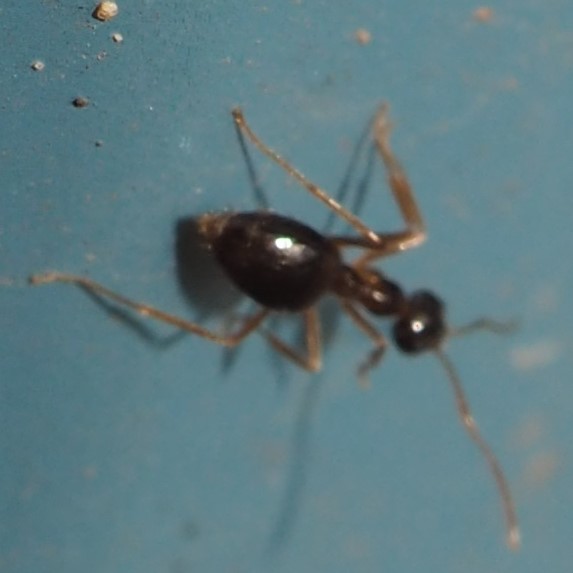
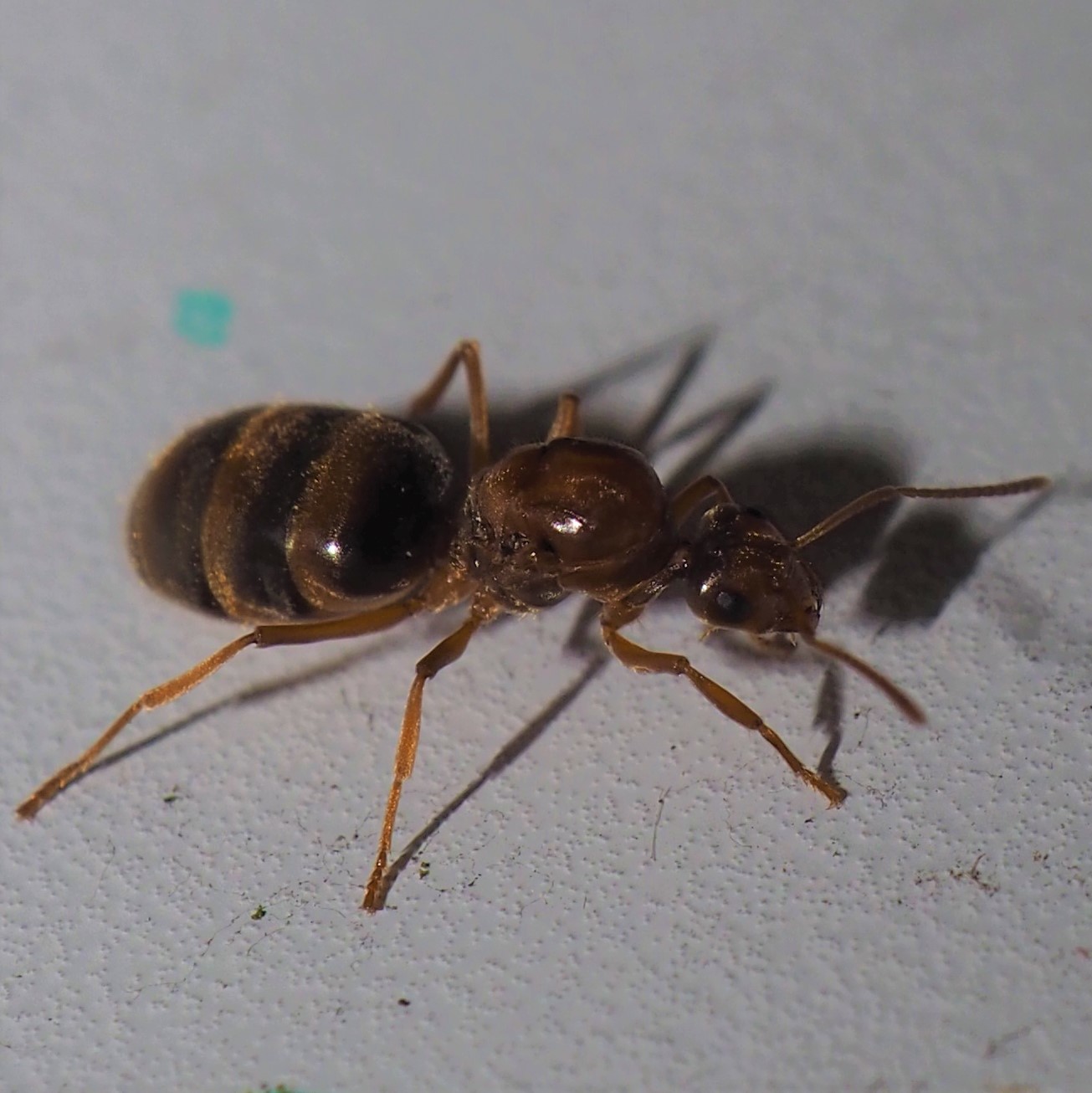
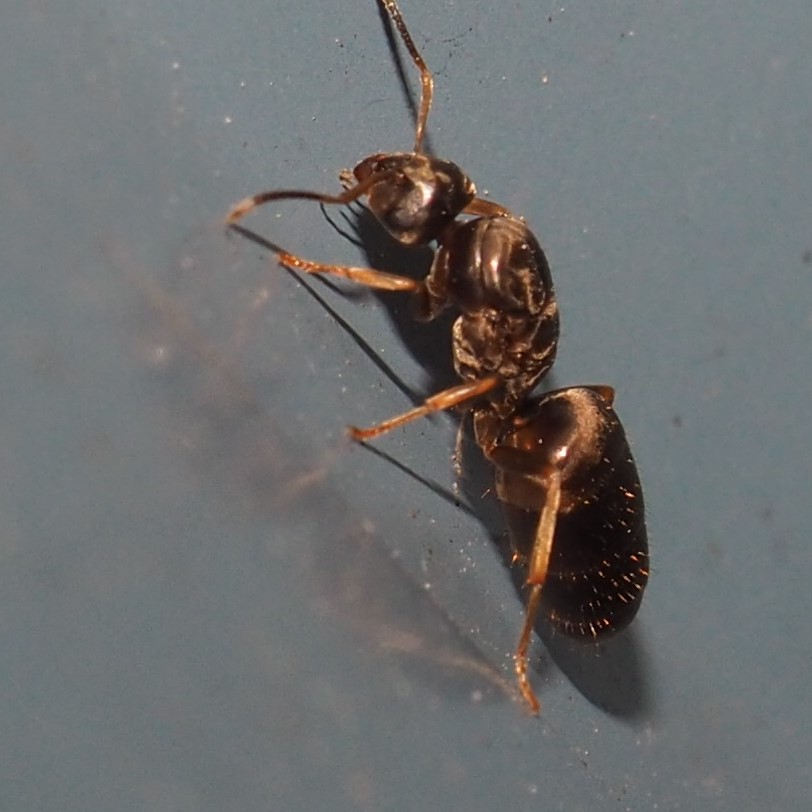
First here is our old friend, the Eastern Black Carpenter Ant. Then we see the Smaller Carpenter Ant, and next the Odorous House Ant. The fourth one is a mystery for now, but belongs to the genus Myrmica.
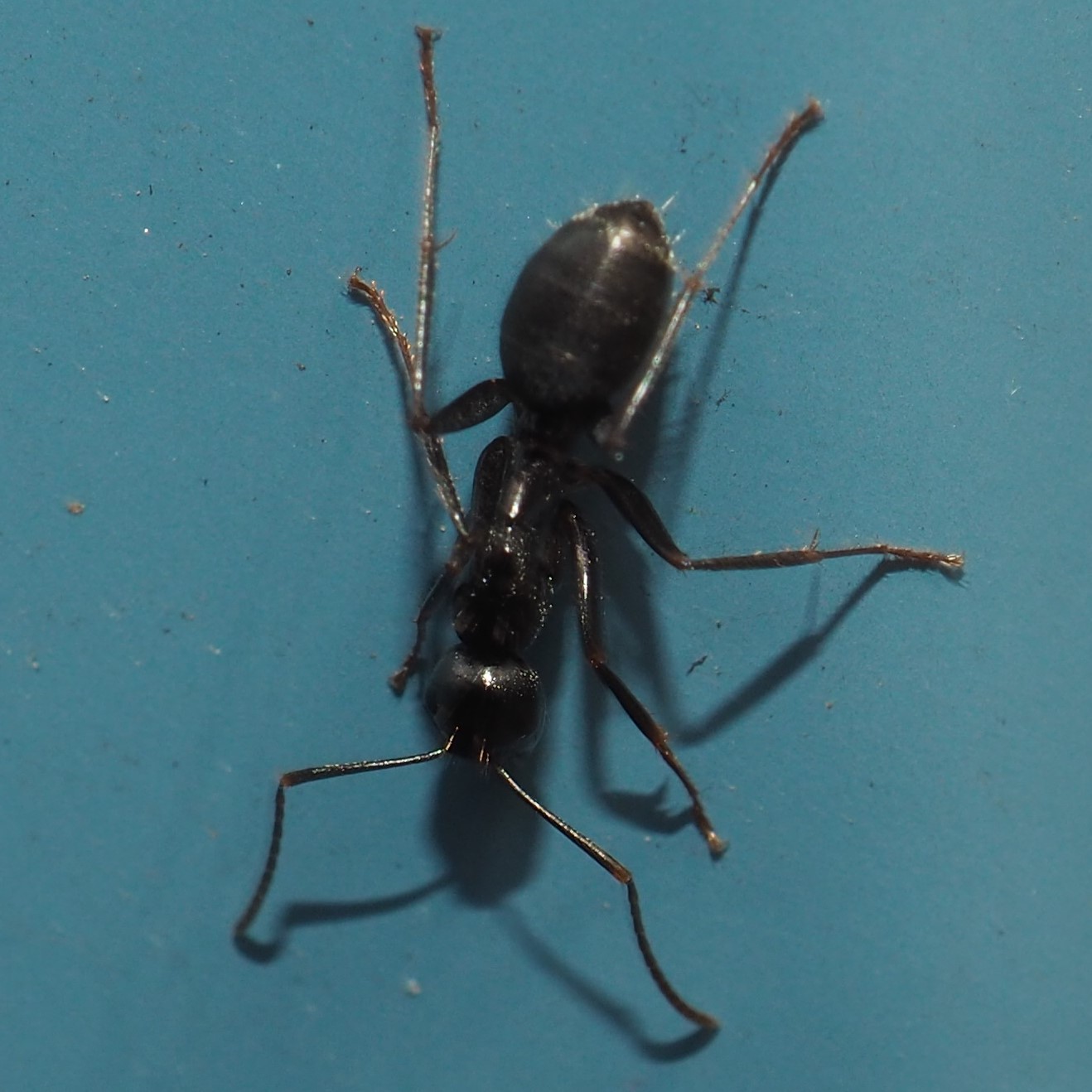
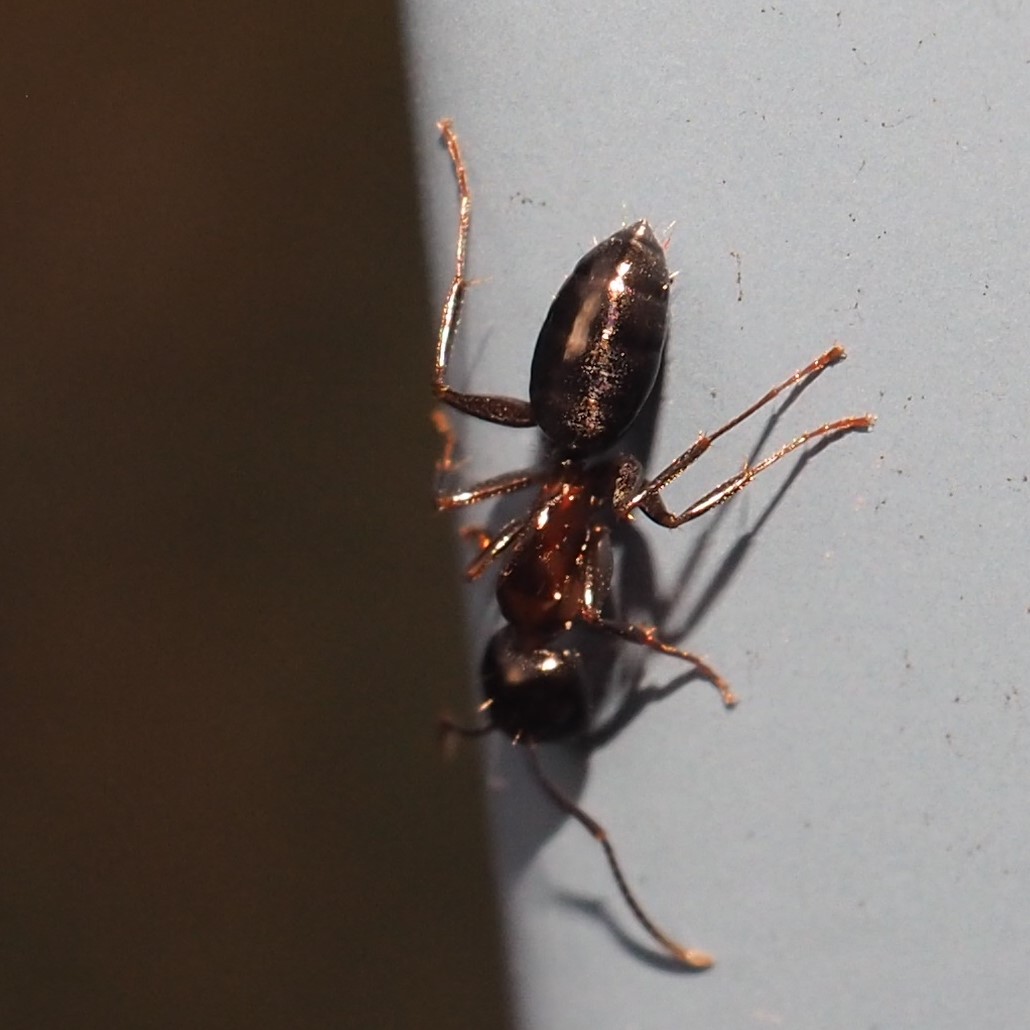

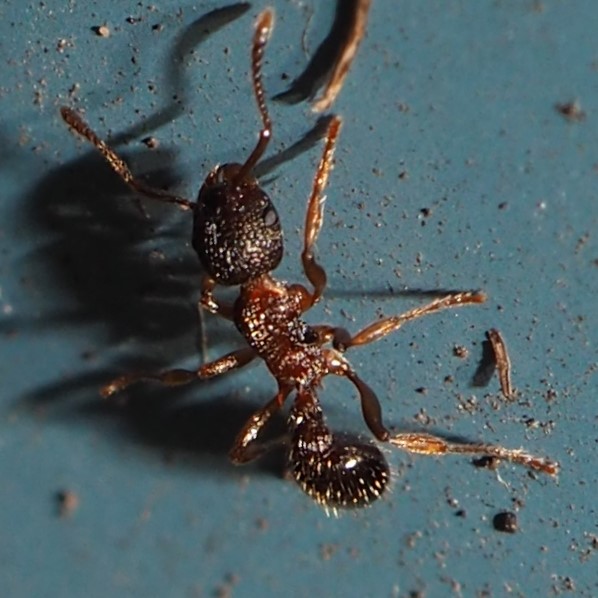
I still haven't seen a Barklouse. I've been wondering when to expect them. But I just went back to my Barklouse Diary and see that the first ones that showed up in 2000 were the baby Polypsocus corruptus nymphs. That was about halfway through May! So now it's time to really start waiting. There are still a few things that look interesting (even though I've shown them to you before): Here's the most promising thing on the East Wall, four panels from the northernmost. I take a picture of it every day and haven't seen any changes on it in weeks. The second one is on the East Wall, about halfway across. Third looks like one of the old shed skins with something dark in the middle. Who knows? Fourth is the tiny picture I got at the edge of another photo - it seems to show something that looks like a minuscule Barklouse Nymph!!!!
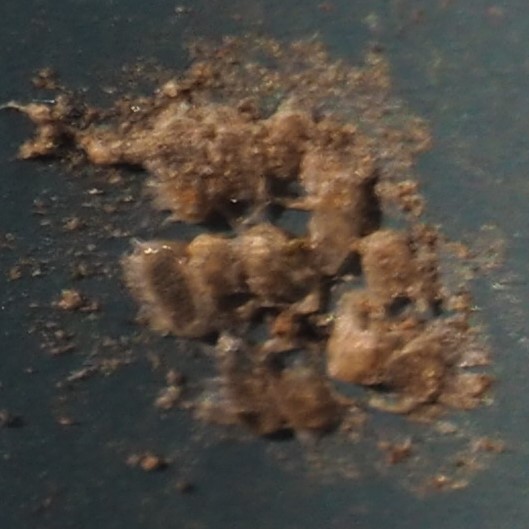

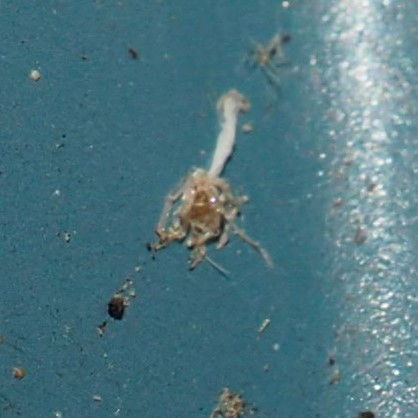
No Barklice? Look here - this little picture shows the tiny picture I got at the edge of another photo - it seems to show something that looks like a minuscule Barklouse Nymph!!!! Picture 2 shows a creature of genus Polyxenus - definitely not a Barklouse, but for now, I don't know where else to put it!
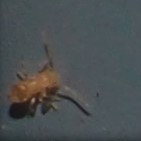
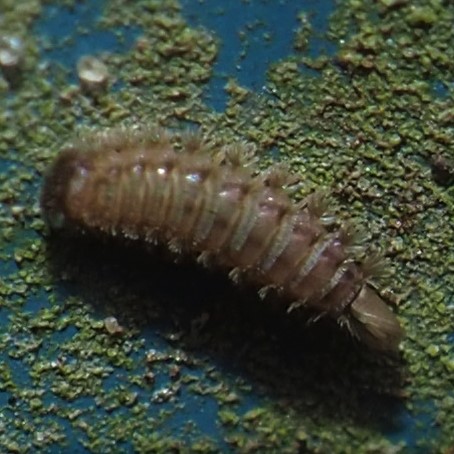
Bees? There are still some Honey Bees. Here is a picture of one of them or maybe another kind of bee exploring the cracks between bricks in the porch wall. I haven't been aware of other kinds of bees. Beetles, on the other hand, have been a bit more common and varied. Number 2 is a Flea Beetle in the genus Dibolia - thanks to Boris Buche for this). Boris also identified the third one as belonging to Subfamily Corticariinae.
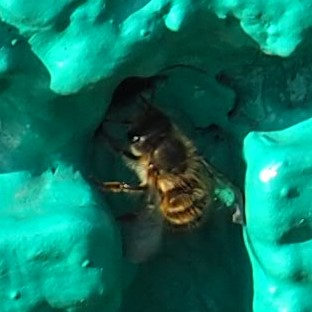
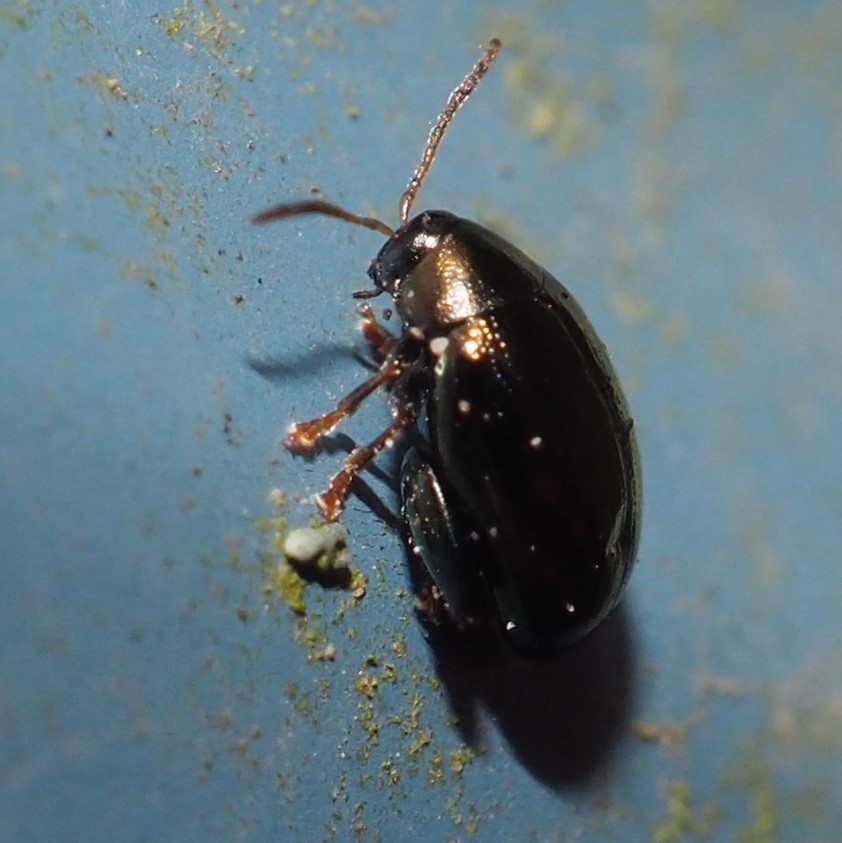
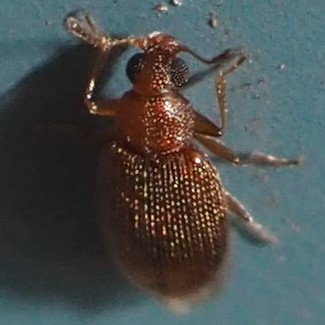
Last week we saw a Puffball Beetle, but it wasn't showing the strange antennae (I always want to call them "antlers" you see in today's picture. Second is our most frequent Beetle, the Redbud Bruchid.
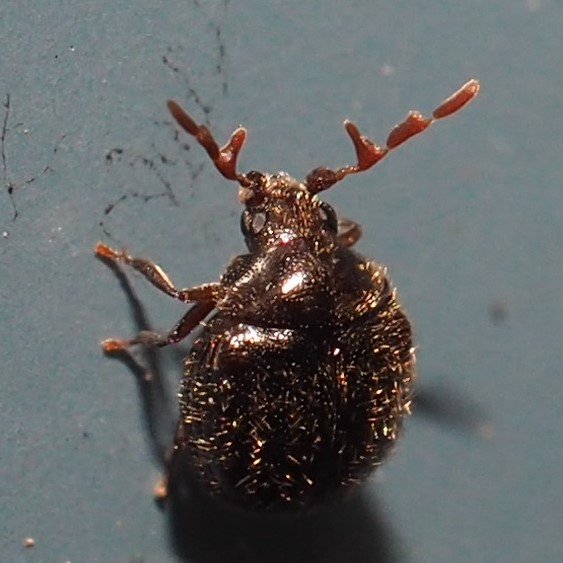
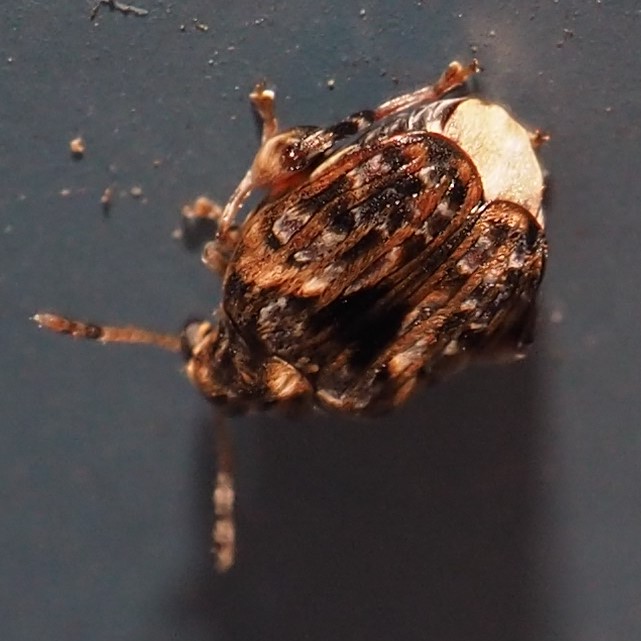
The Bugs were a little easier to ID this week. Here is our White-margined Burrower Bug. Then a bedraggled Drymus Unus. I wonder if this is an aged one left over from its appearance in the Fall. I just don't know how long they live, but I suspect this one is elderly. The third one is the False Milkweed Bug. It was just sliding out through the clapboards on the deck wall. (I almost typed "wainscoting".)
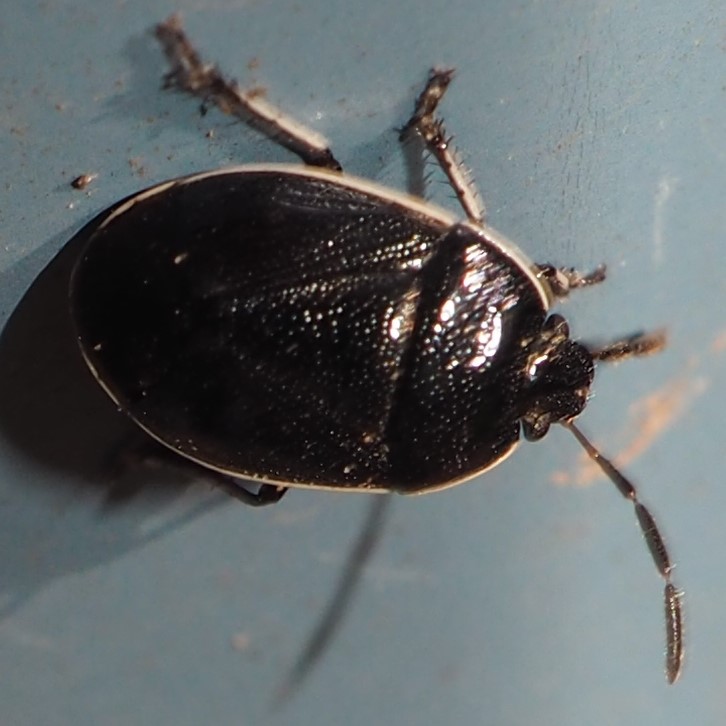

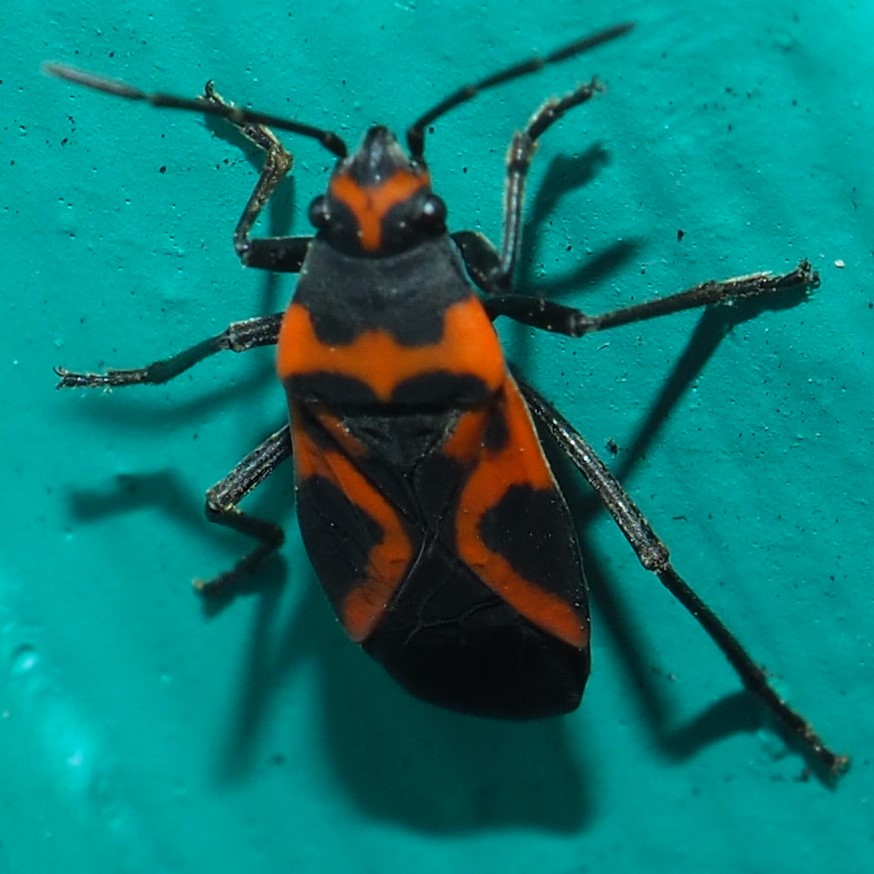
This tiny bug might be an Insidious Plant Bug, but I don't remember its being SO tiny.
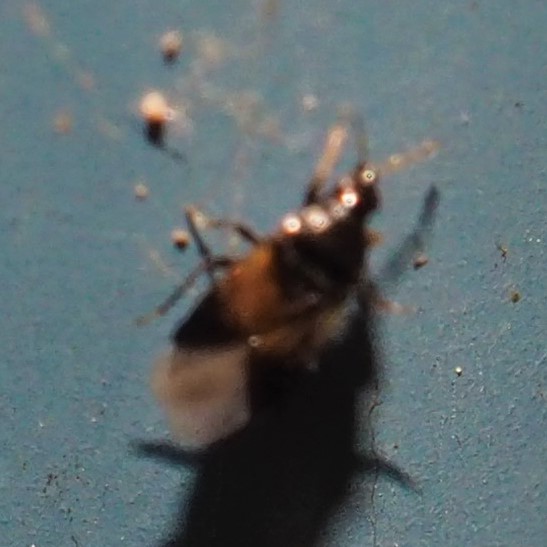
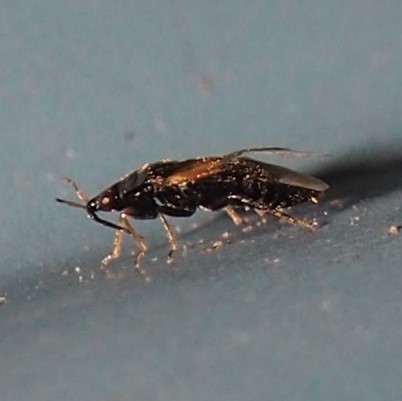
There are more kinds of Leafhoppers out there now. First is Erasmoneura vulnerata. Next is one that I was surprised to find was a new kind on me. Don't worry, it is one that I have seen once before, Eratoneura ligata.
The third one is also one I've seen once before, and it is Eratoneura gothica. Both of these last two photos look so very different from the ones I took before, but so much depends on the lighting and angle PLUS sex of bug.

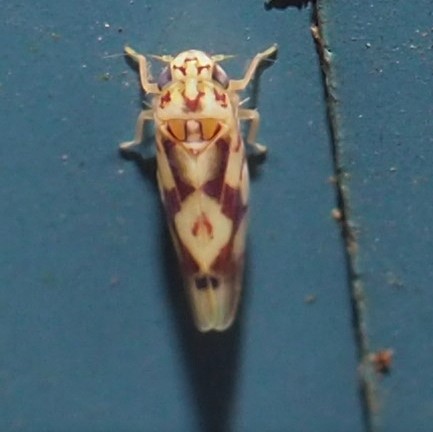
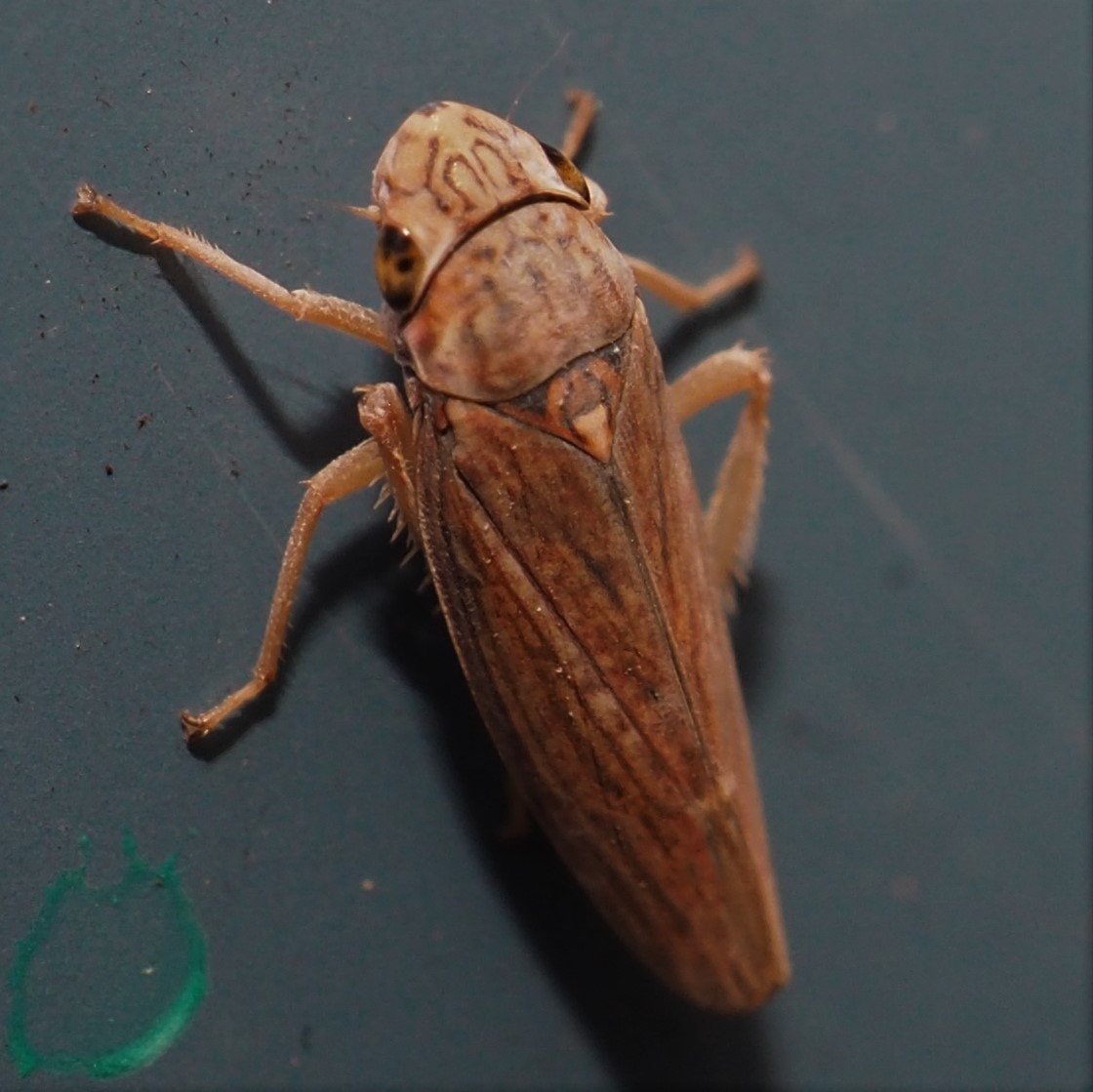
Other than those, the only other leafhoppers I saw this week were all variants on the straight-line red and white ones in genus Erythridula. If you look at their heads and shoulders, you'll see that these two are actually different.


Time for some Flies. Most of them are Midges, Gall Midges or Fungus Gnats, all very difficult to tell one from the other. Here is a Non-biting Midge with a distinctive pattern on its back. Next is a nice red Gall Midge. Third is another Gall Midge on very long legs, and showing the typical (to me at least) delicate antennae.
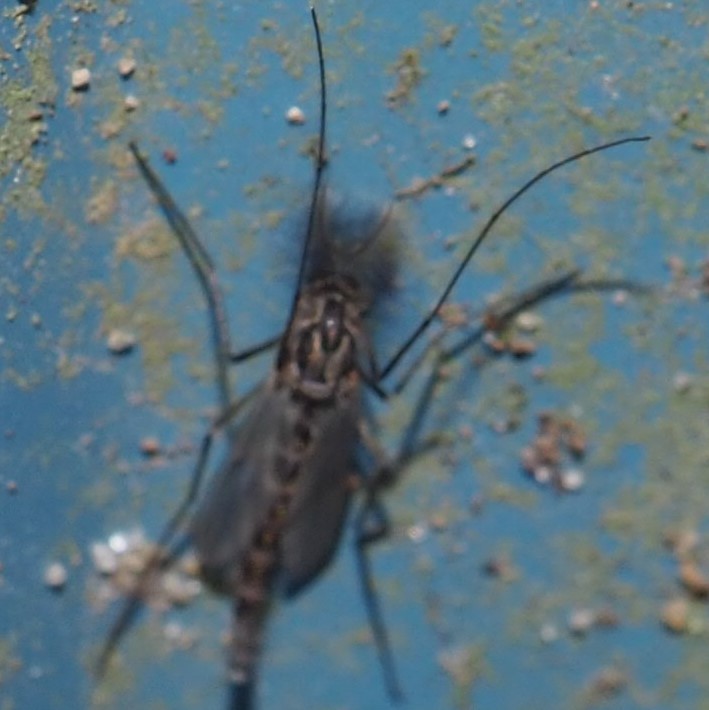
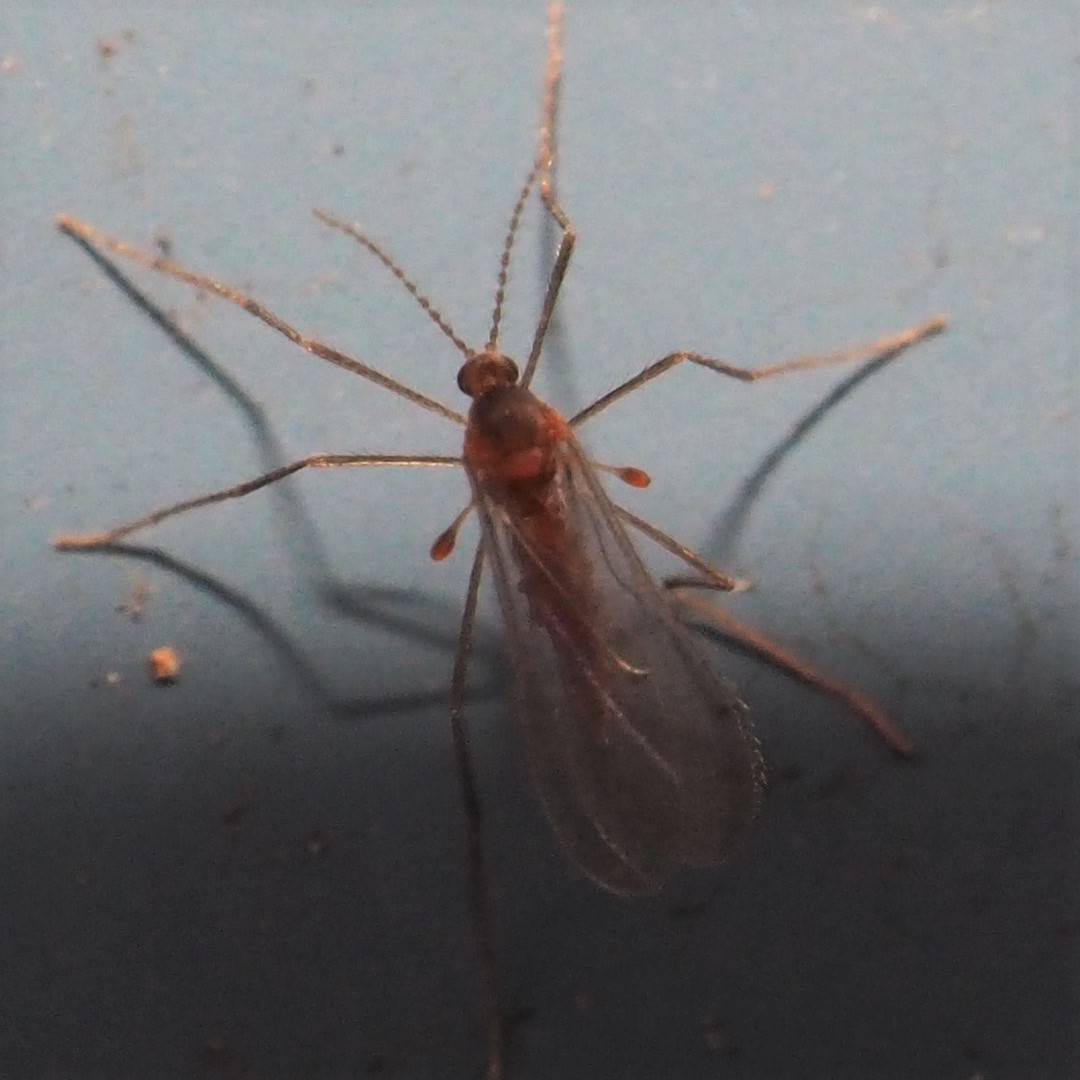
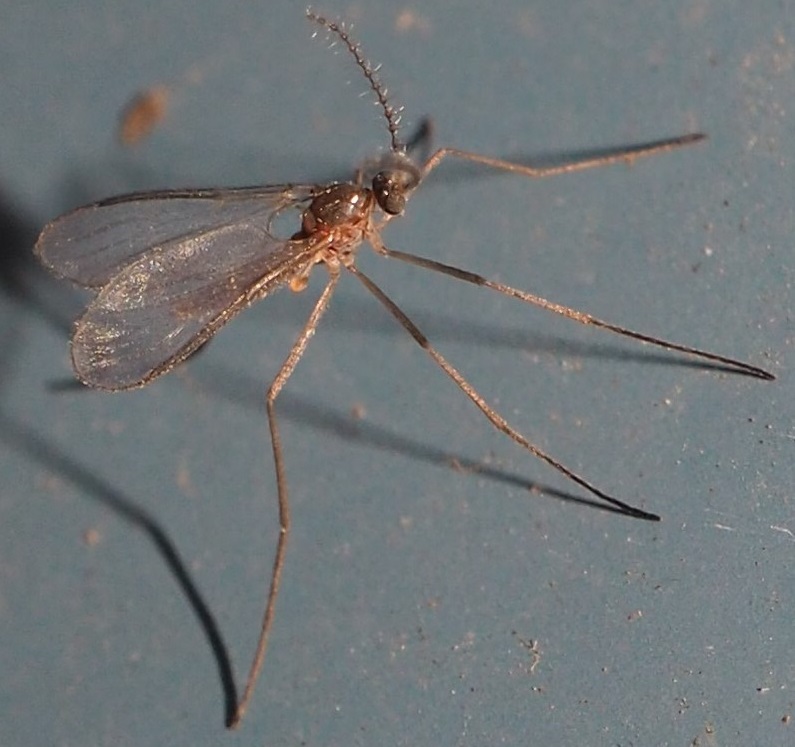
Here's one larger Fly. And another. Third is a pair of either Gall Midges or Forest Midges of the family Cecidomyiidae mating. Look how much smaller the male is. This is very common in the insect world. The midges are of course very small to begin with. Don't let the size in the photo fool you!
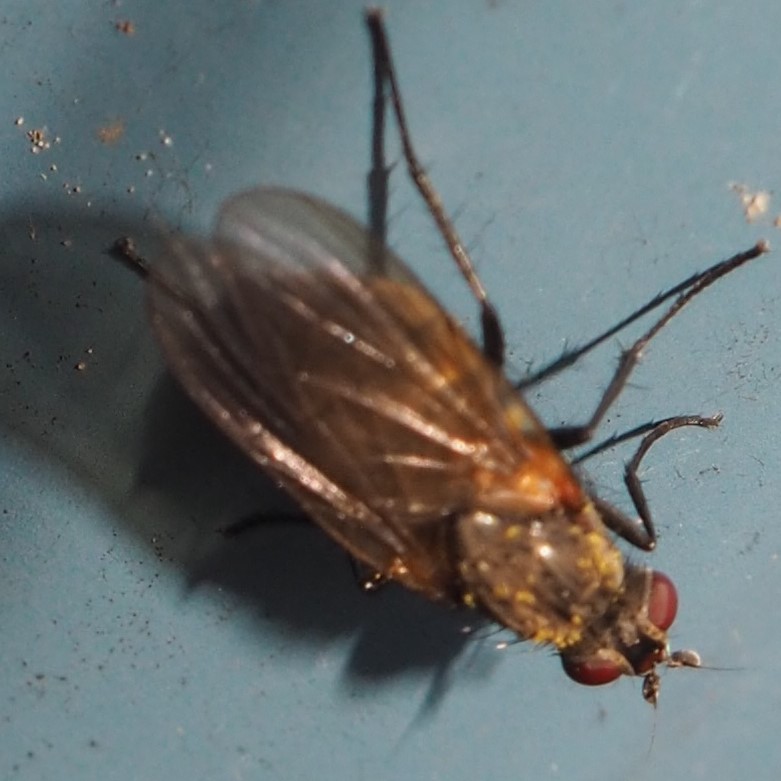
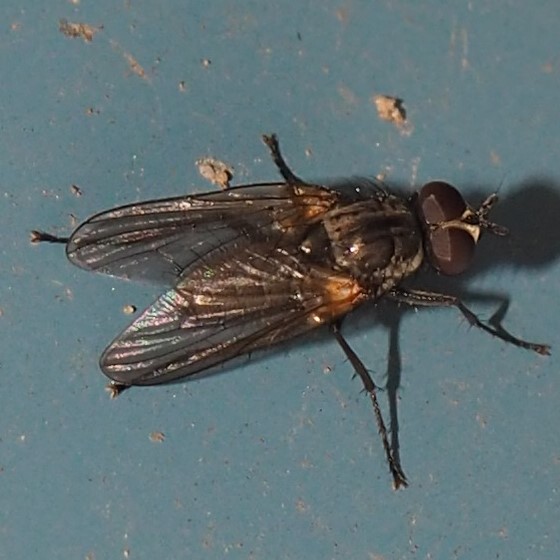
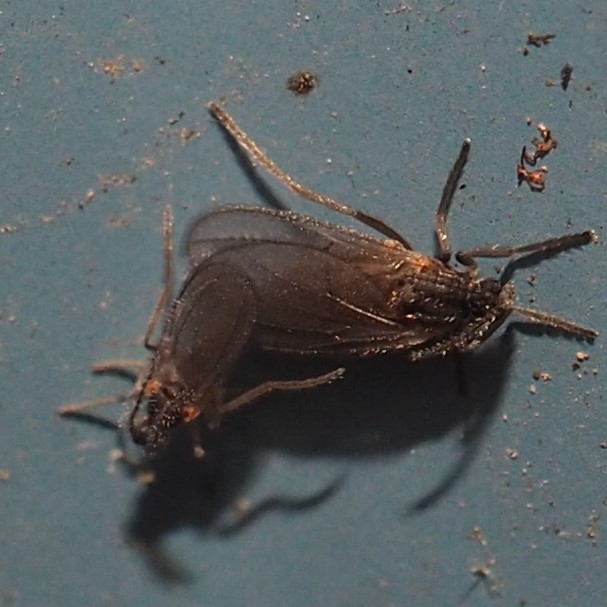
Let's see how the Fishes are doing. Here's a picture of lots of them close enough for a decent family photo. They are of course much prettier in person! In the second row, we see one of the very tiny fish babies coming up for a flake of fish food, and also a little group of some of the brighter older fishes. The last picture doesn't show the creature, but the six bright spots caused by surface tension of the movefeet and the sunlight trapped in the spots. The creature? I had feared that when we put in essentially a new pond that the many little things that moved in since the redigging and laying of the new liners would have to wait a few years to begin to re-establish themselves - and here they are already. I've now seen at least two Water Striders! This is one.
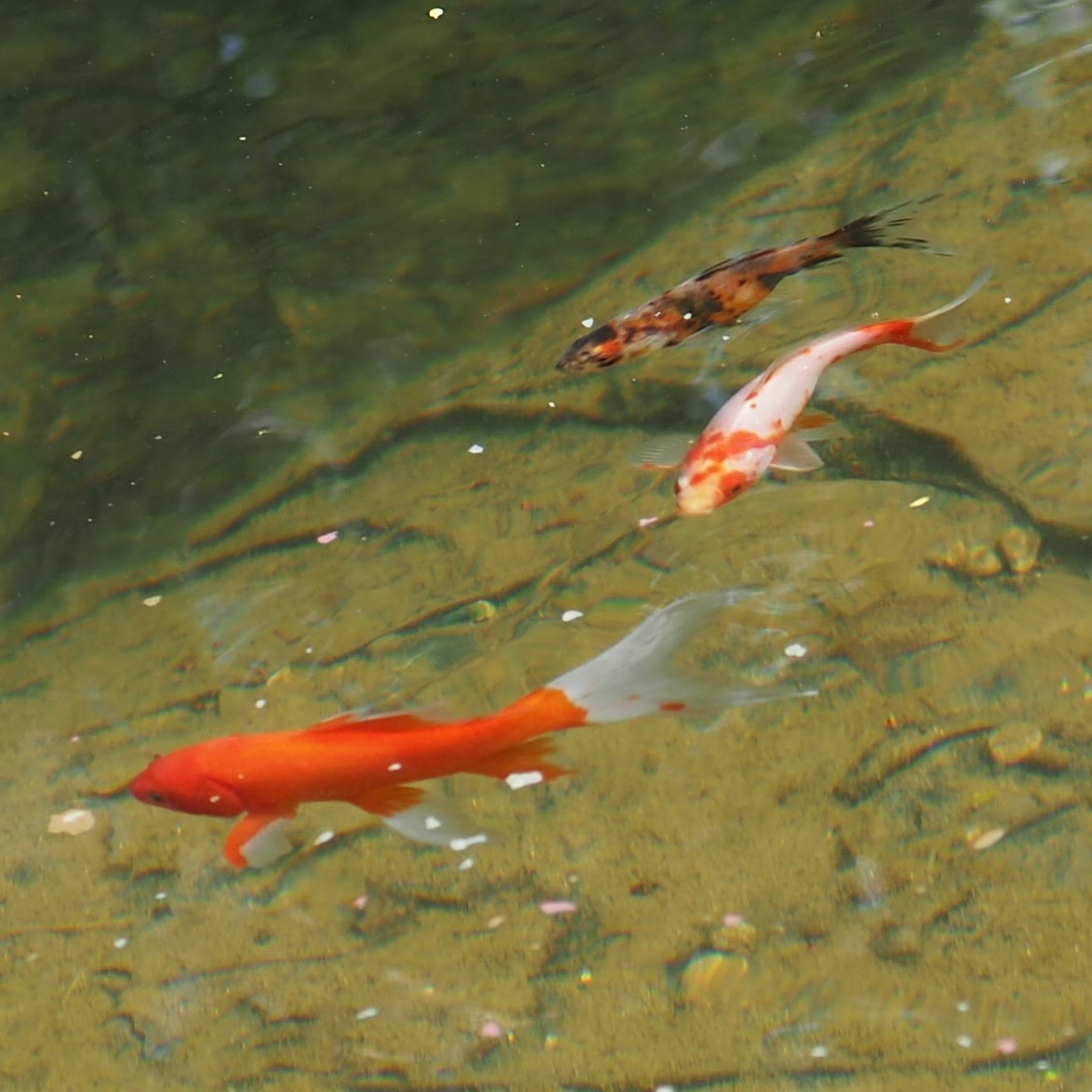
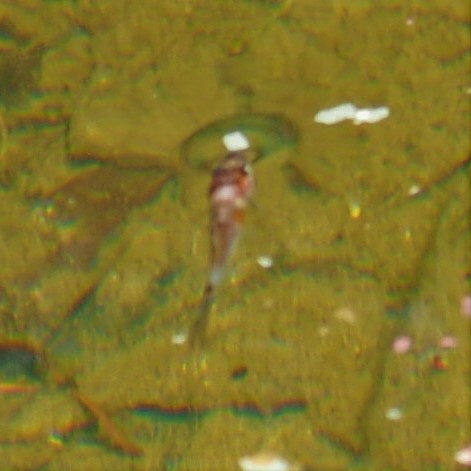


And my pond made me think of the Farley's pond. Sue sent me this picture the other day. The Swans have arrived. Maybe they will help themselves to some of those red fish. :-)

And here are some portraits of Froggy. I needn't have worried about his ability to get out of the water. You may ask what he is sitting on in picture 2. Well, picture 3 shows he is sitting proudly on his alter ego, the croc rock. Fourth, here is a Brown Lacewing. Not a frog, but a lovely little insect. It seems to have found an even smaller food item. Addendum: I didn't see Froggy today - but at about suppertime, I did a better look and found him dead in the deep end of the pond. I'm sure that's where he would have liked to live and die. There were no wounds on him but he was bloated so I know it had happened between last night and this morning. Goodbye old chum. I hope he won't be the last, but he was one of the best.
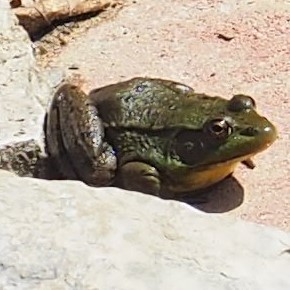
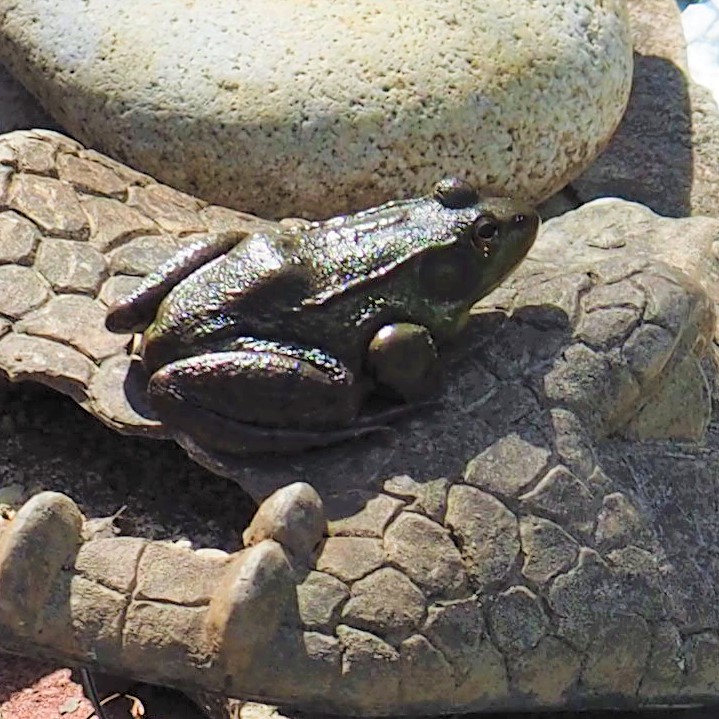
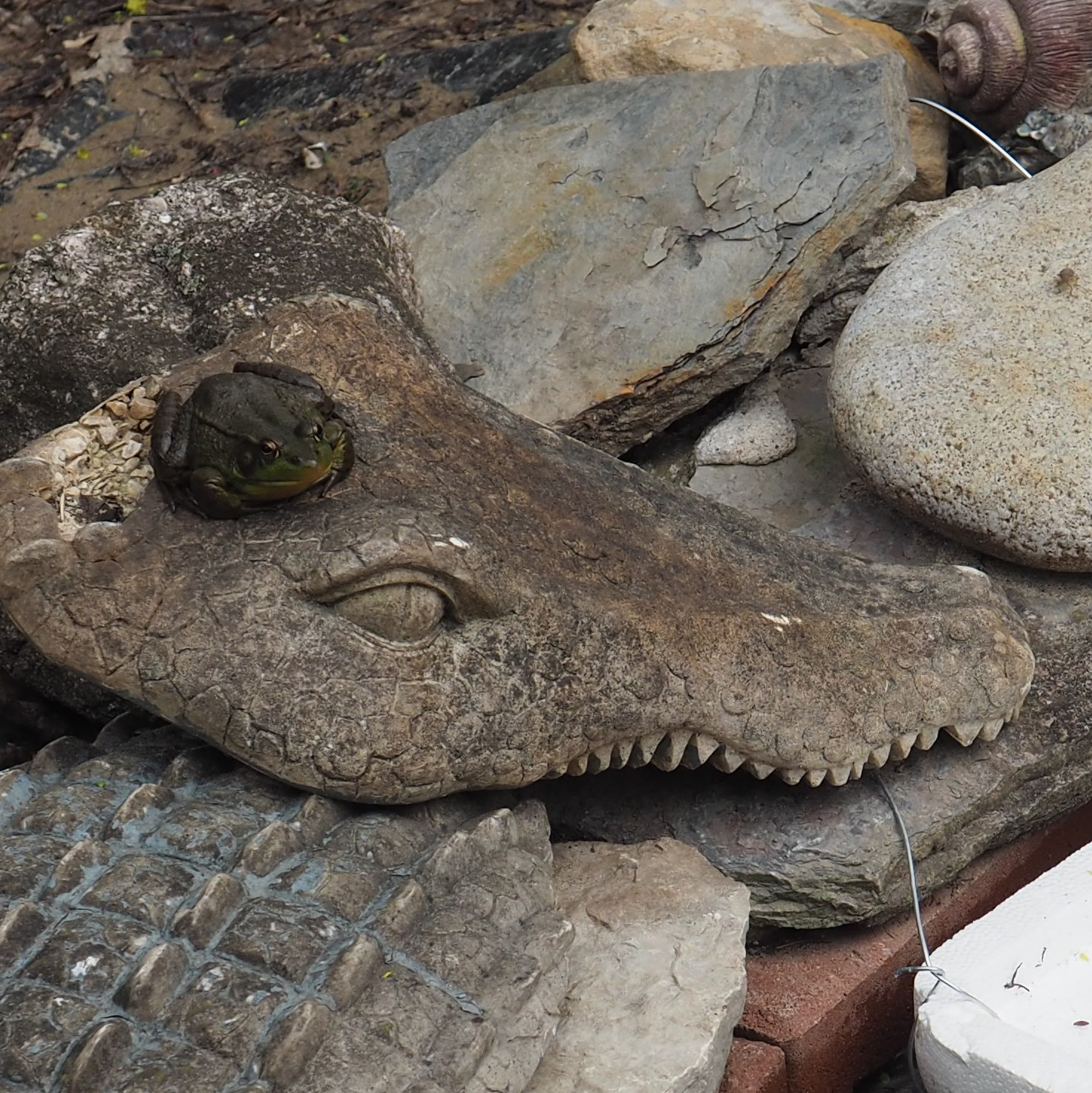
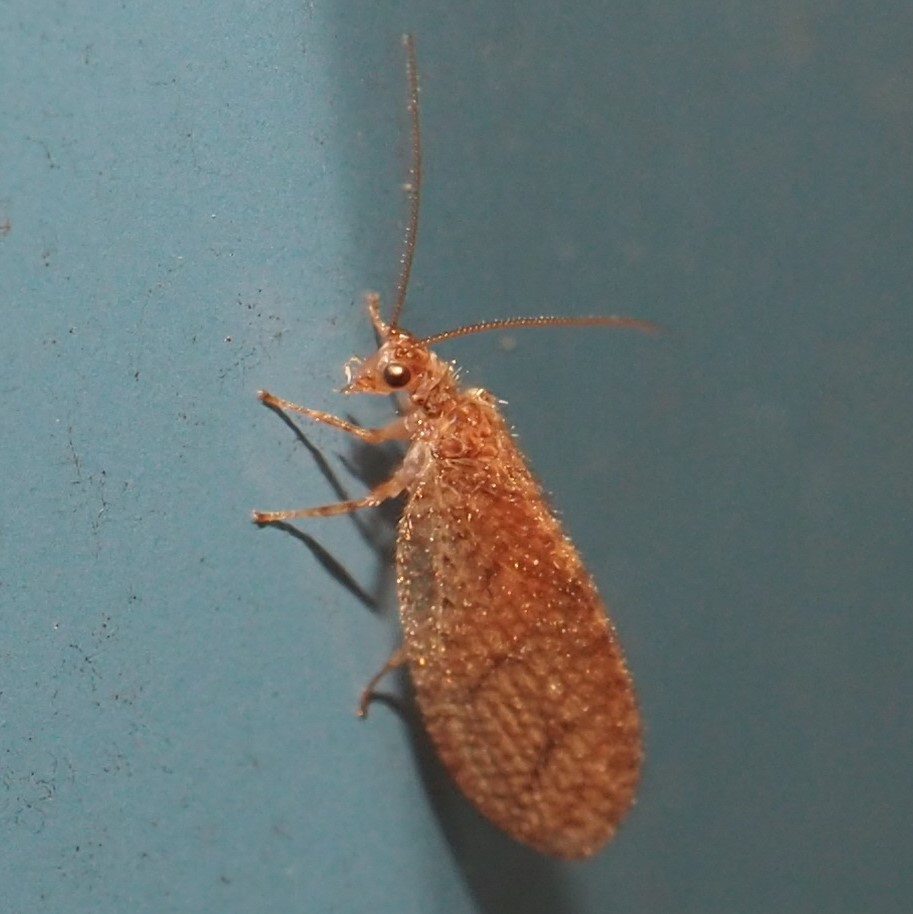
Let's see some of the flowers. First, I have to apologize. I noticed in a letter from my friend Mary-Ann Cateforis of Potsdam that she mis-spelled the word "Scylla" as "Scilla". Today I saw a picture in iNat where someone had spelled the Greek generic name of that very flower as "Scilla". I went to Google, always a source of grammar and other wisdom, and two great rocks came crashing together on my head as I realized I had been guilty of assuming that just because there is a name Scylla in Greek mythology, that it must be the only possible way to spell that flower name. So here you have my apology, all of you who have never once said, Martha, you can't spell your way out of a paper bag. It's SCILLA! Since it is almost finished in my yard since last week, here is a picture from last week. Sorry, and Thanks! The replacement for Scilla is now Pulmonaria. I believe Eleanor Rosenthal gave me my start for it! It is such a darling little thing, showing its petals as it opens from pink to purplish-pink to bluish-purple to blue. The perfect flower for someone who wants it all! The second Pulmonaria picture is 3 days on from the first, and you can see that almost all the blossoms ae BLUE! Last is the Celandine Poppy that Mary-Ann also gave me, opening more every day, with a May Apple looking on.
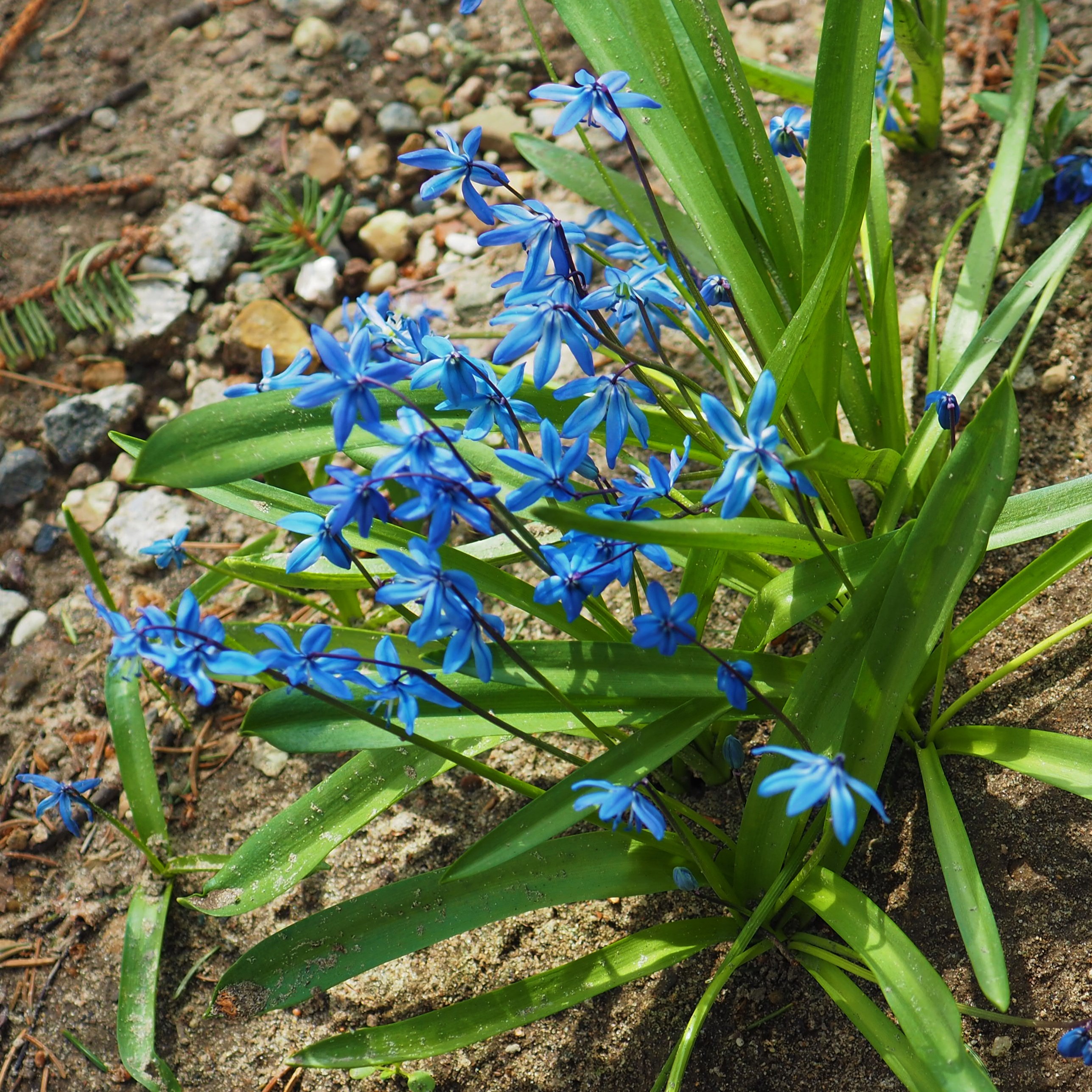
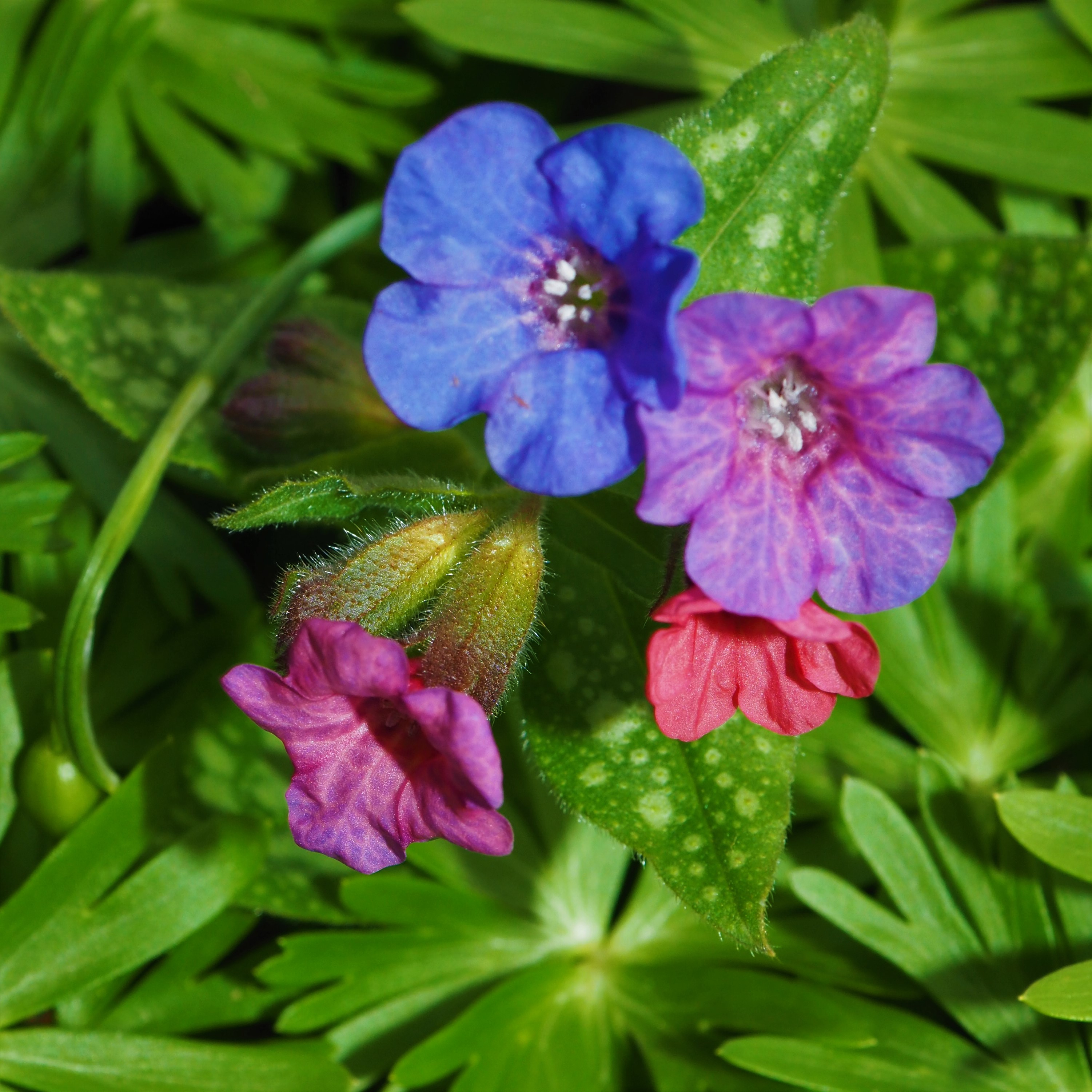
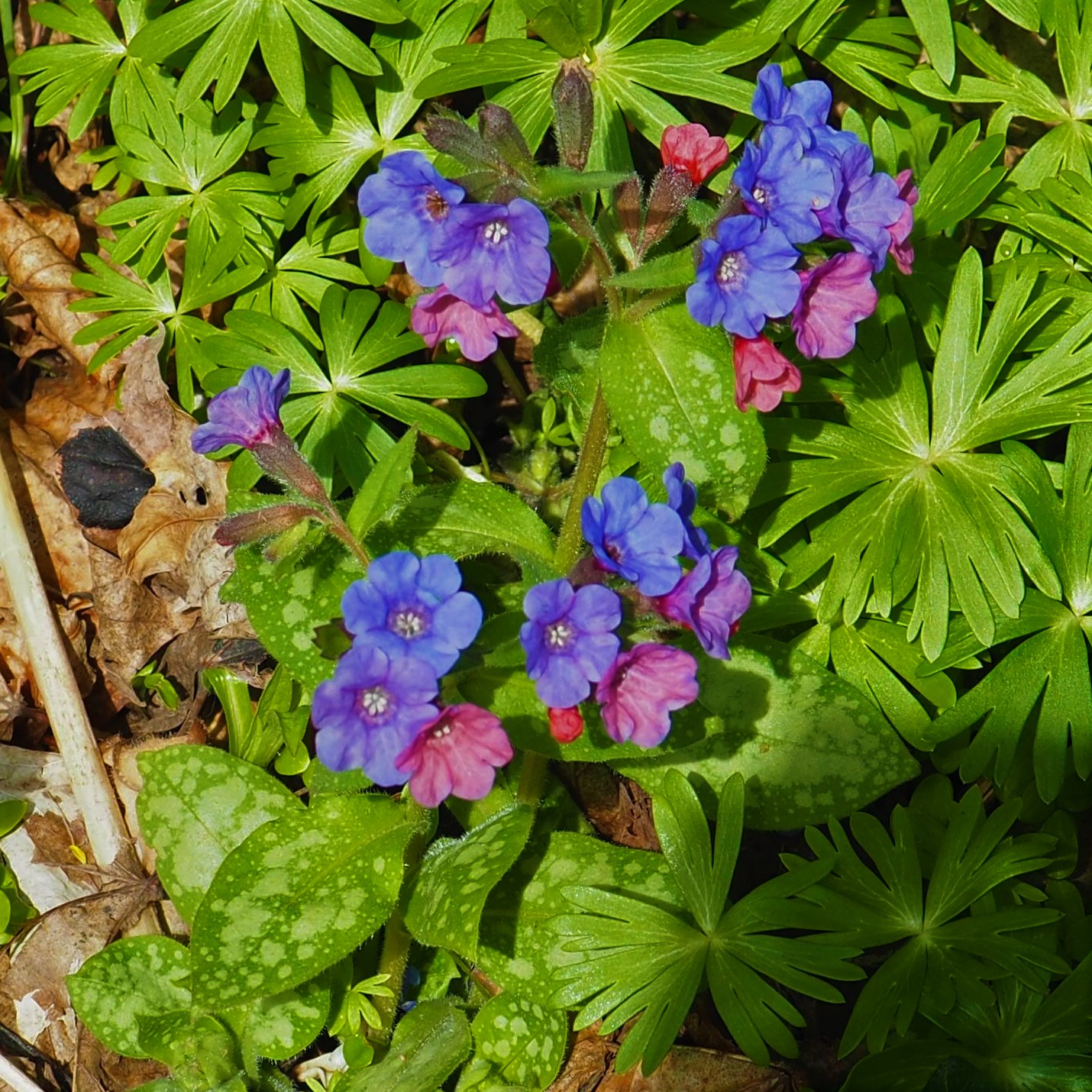

I took a little walk to the south-eastern corner of the yard to visit the Trillium. I have several varieties of small ones, like these that live on the southern edge of a big Norway Maple Tree. If I now continue due south, I get to an enclosure that has a couple of Yellow Trilliums and quite a few sessile Red ones. I don't know how they have made it all these years, what with the encroachment of the Vinca minor (picture 4), or Periwinkles as we called them in the South but people in the Midwest told me nicely that they were Myrtle. Chaim, who is a student of the Hebrew Bible, told me some interesting things about Myrtle:
In the Biblical narrative, Esther and Mordechai were transparently stand-ins for the older pagan gods, Ishtar and Marduk. There are several clues that reinforce this connection... As it's a story about hidden and revealed identities, a big clue is the heroine's two names. While she went by "Esther" in Persian society, her birth name was "Haddasah". In Hebrew, Haddasah means "myrtle"... the five-petaled, star-shaped flower sacred to the goddess Ishtar.
I don't think I'm the only one to notice this... Astartea (Astarte is another pronunciation for Ishtar/Esther) is a genus of flowering plants in the myrtle family, Myrtaceae.
Thanks, Chaim. I didn't know any of that!
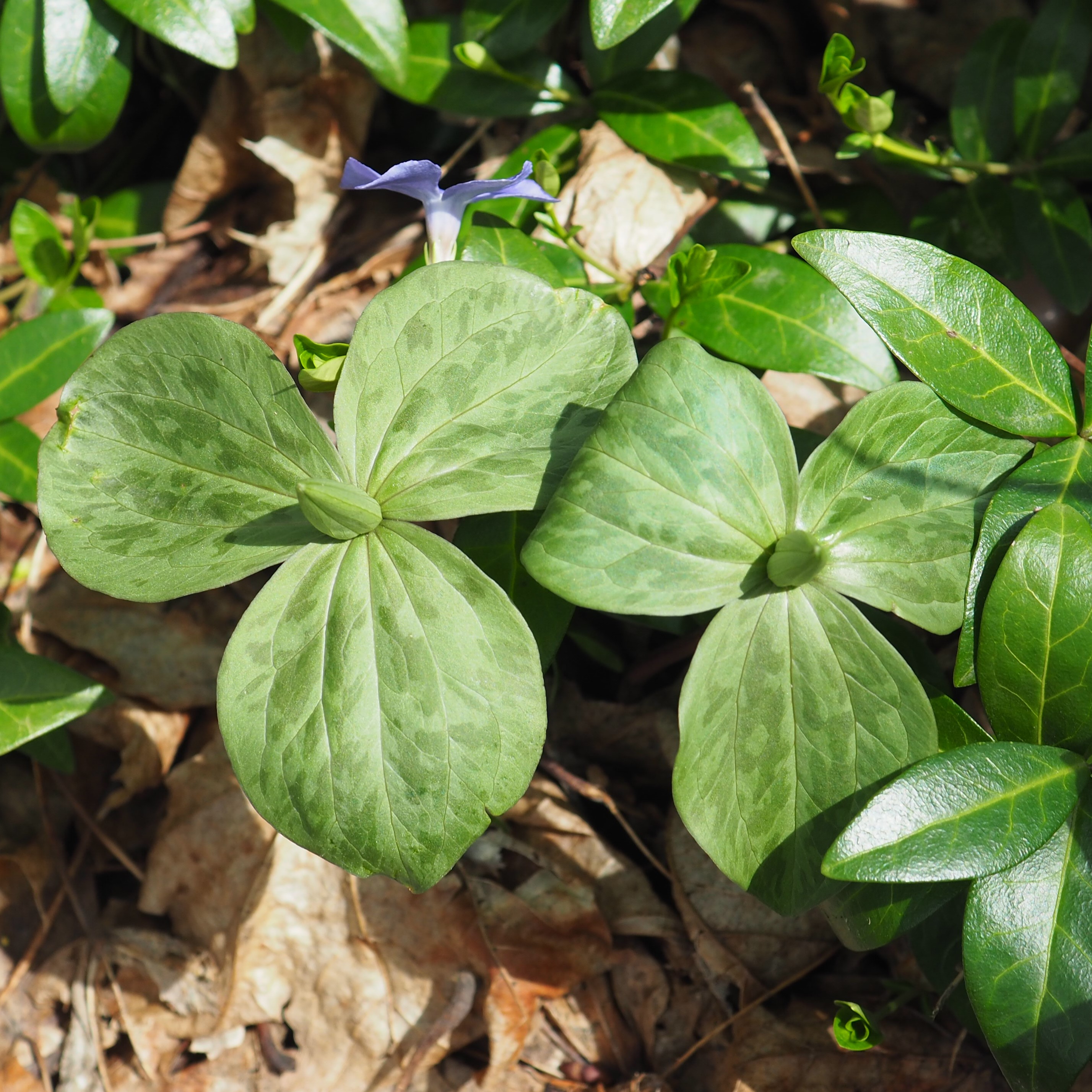


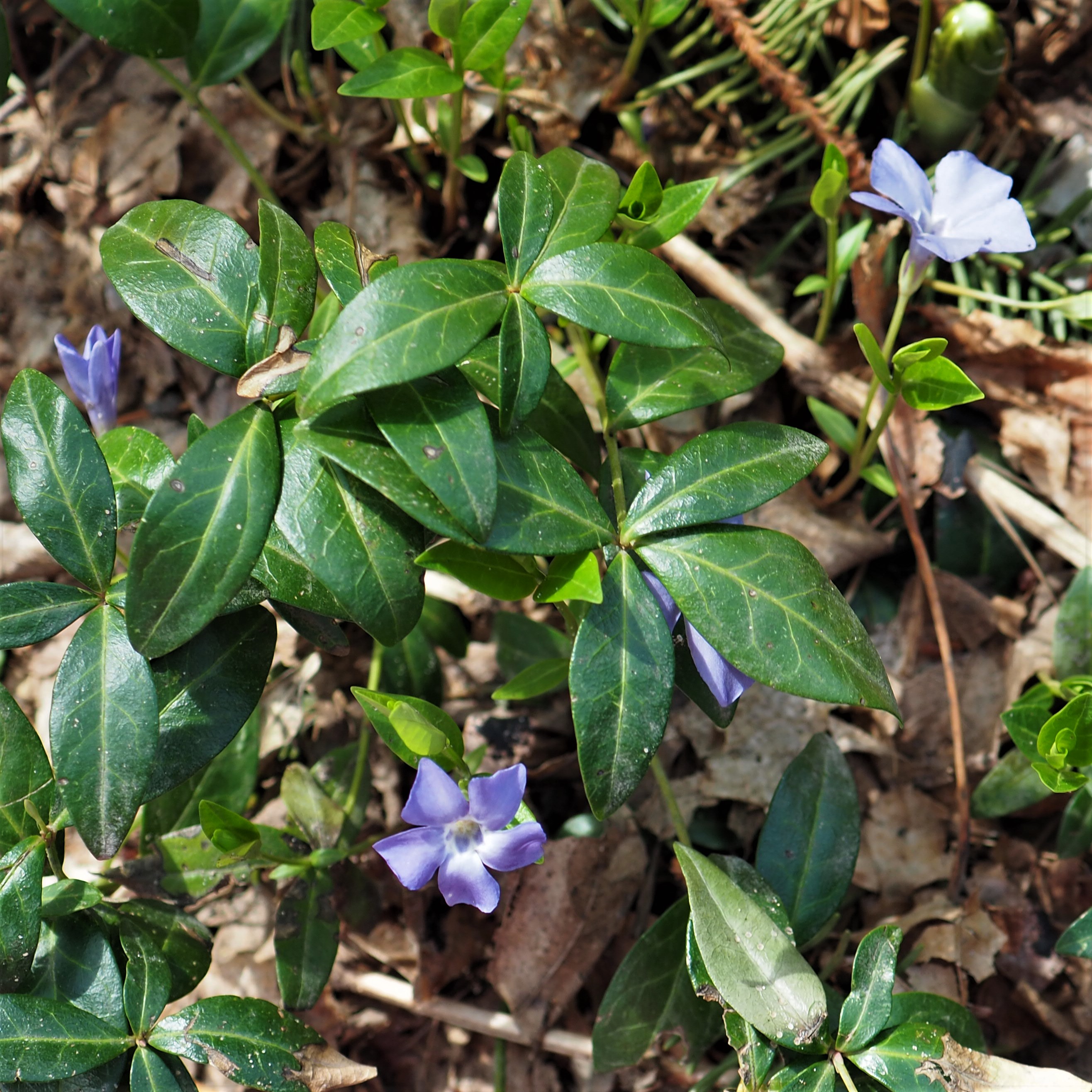
It's time for the Grape Hyacinths to show off. Last time I remarked that there is one kind of Grape Hyacinths that start out with new leaves of the season and begin blooming earlier than the "other" kind, which put out their leaves slowly all winter but bloom slightly later than the former kind. Here is a picture (from last week) of the earlier bloomers but in the background you can see the earlier leafers with their leaves lying bedraggled on the ground and no blooms in sight. The second shot shows the "early"s this week. And last, now we can see the "others" taking their turn.
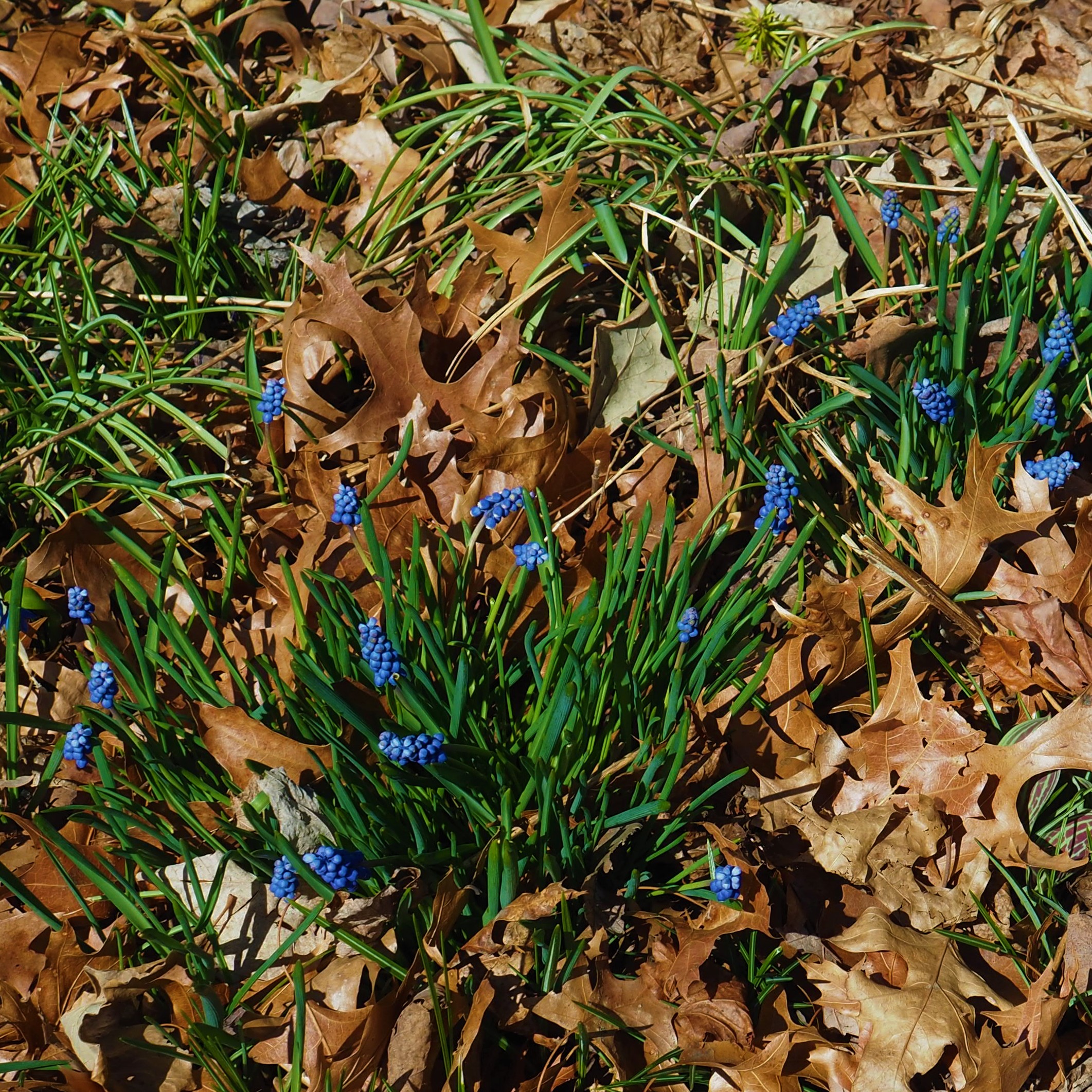
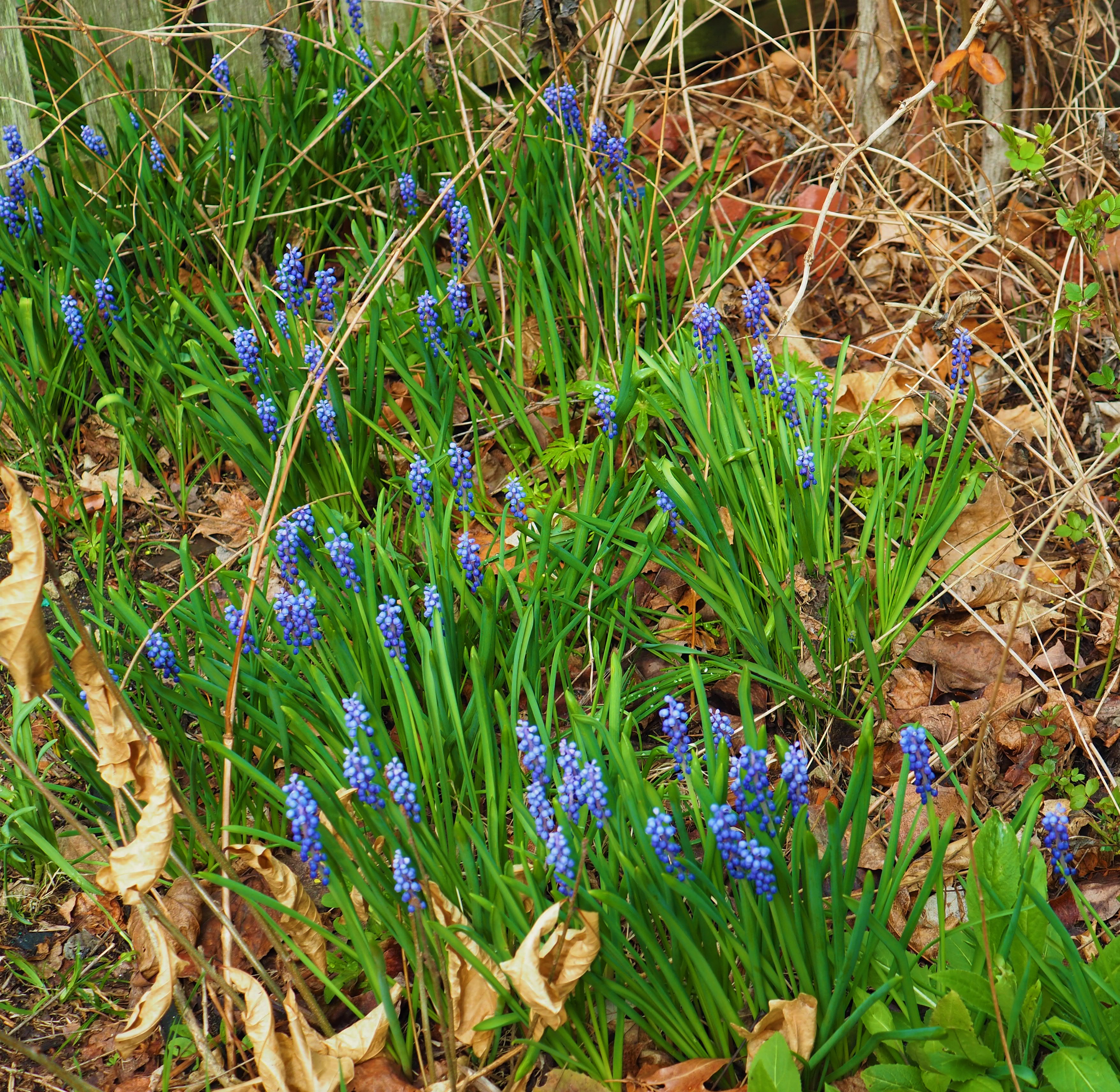

Here are the "others" (lower left) with their bedraggled leaves but now thrusting up their pretty flowers. But now that you know everything about Grape Hyacinths in the Midwestern Garden, here is another twist. There is another kind that has variegated flowers, light on top and darker on bottom, and very broad leaves! I don't know if they are naturally in my yard, or if someone planted them, but they are very welcome here. Aside: the Hellebore are lifting higher yet. Click once or twice on the picture to see an enlargement.
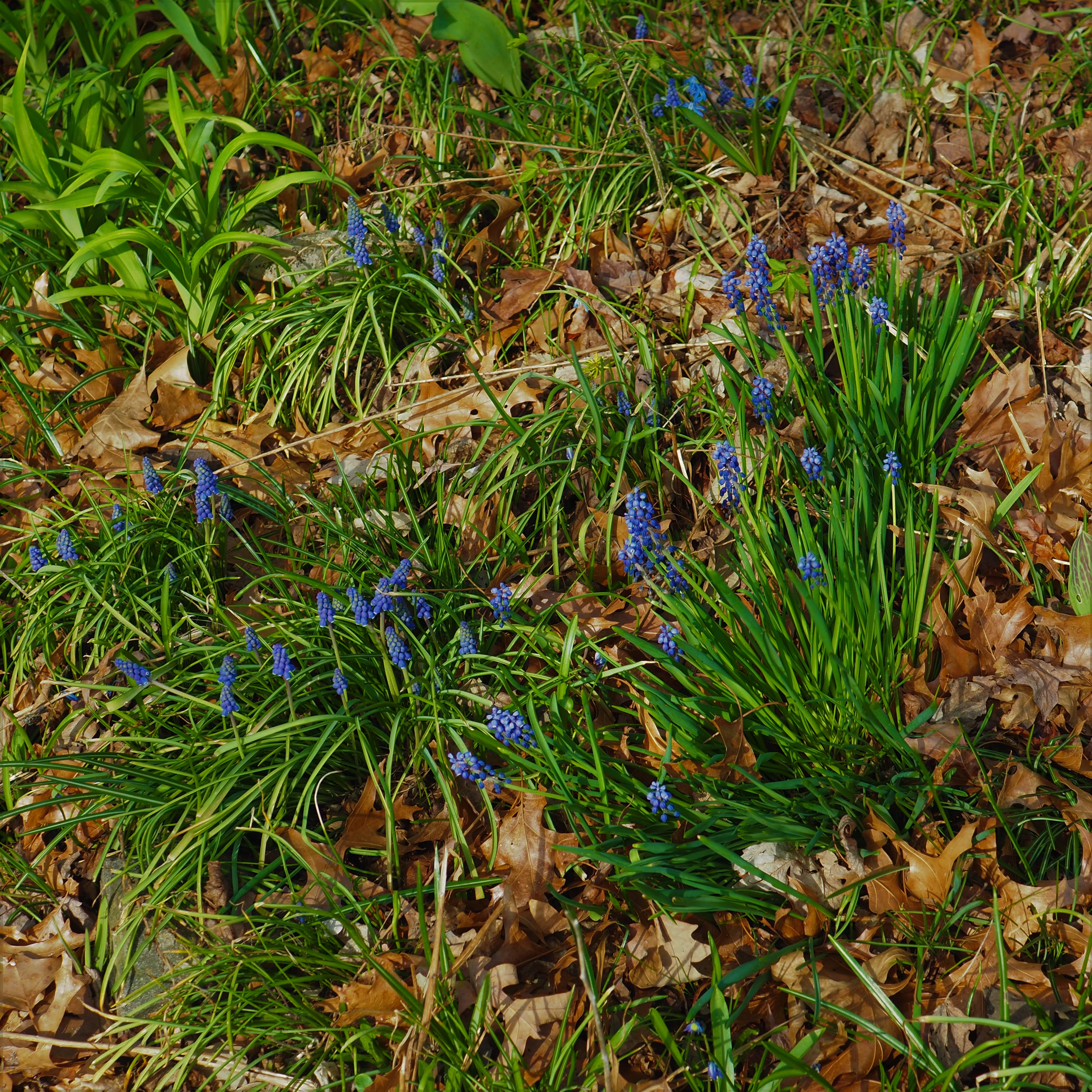
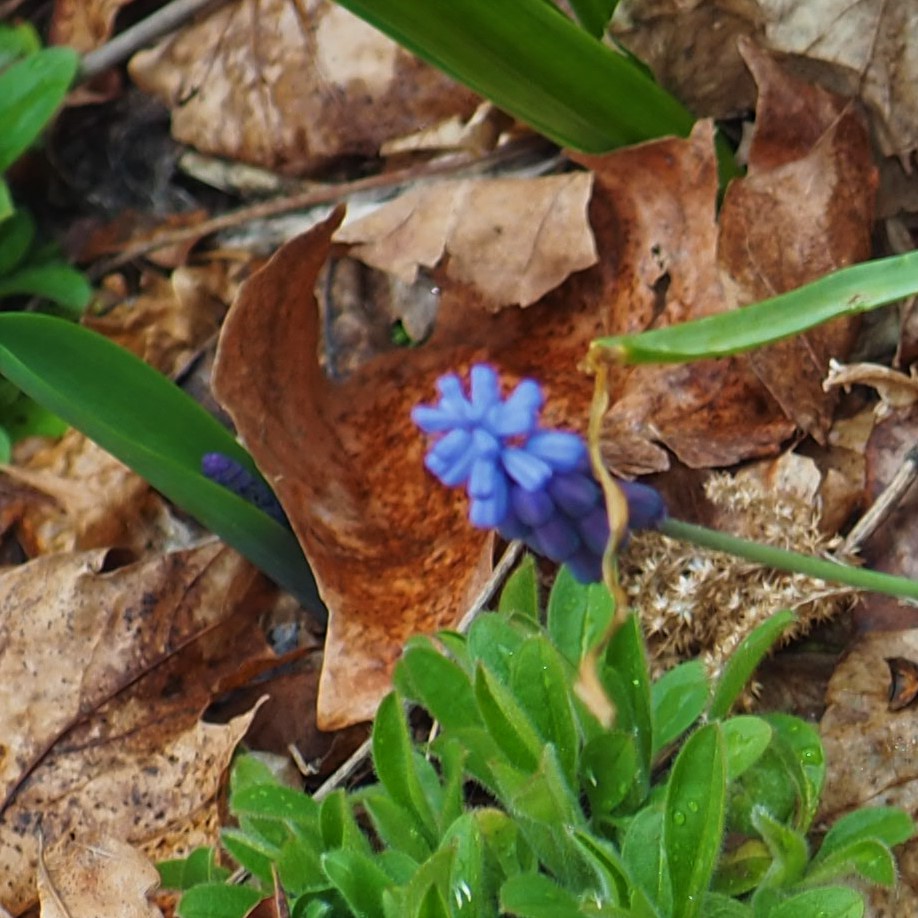
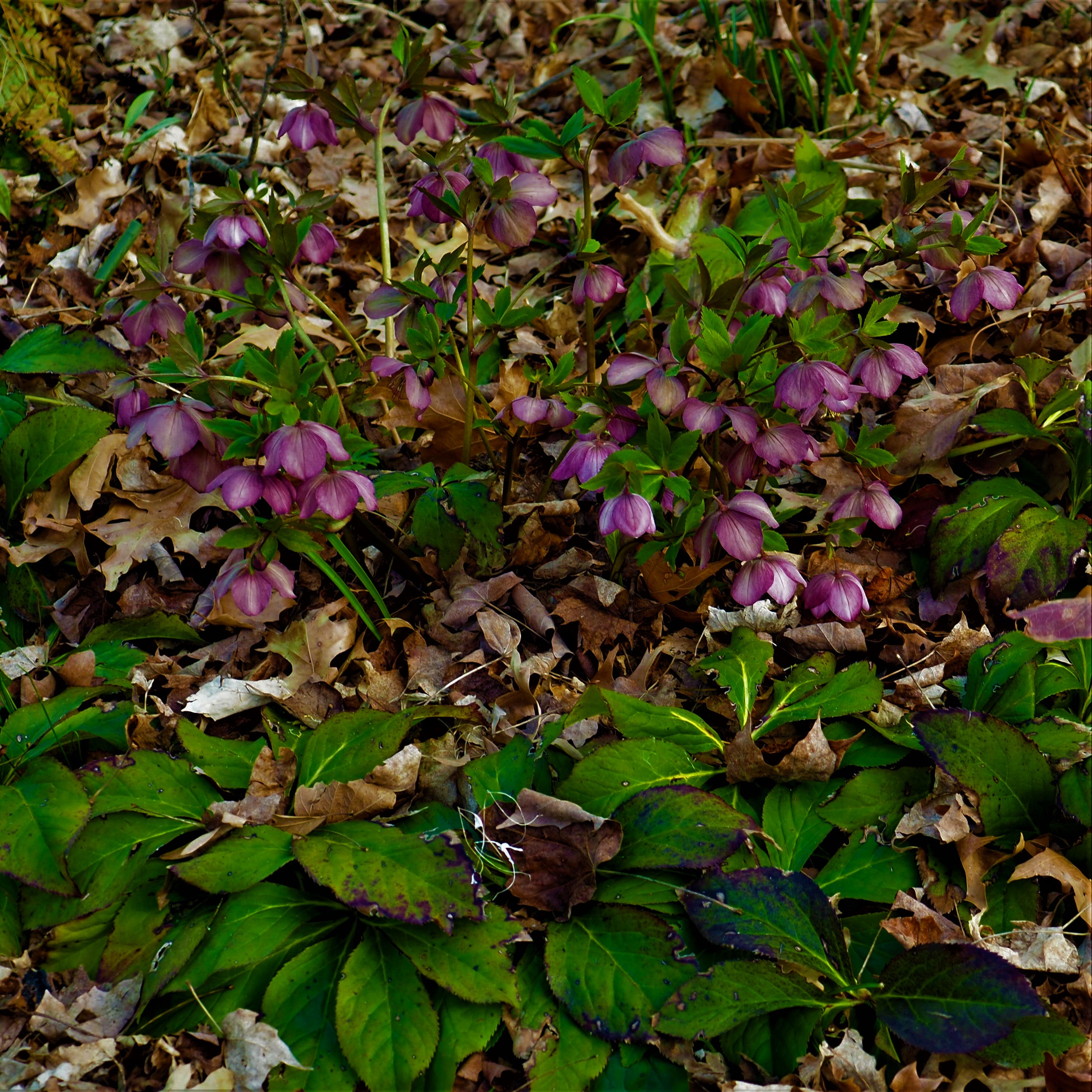
Let's look at the Spiders. We had our share of little Cobweb Spiders. Here is one exemplar. Then one of the Common House Spiders. Third may be a Grass Spider - whatever it is, it is tucked into a tiny crack between the clapboards on the deck.
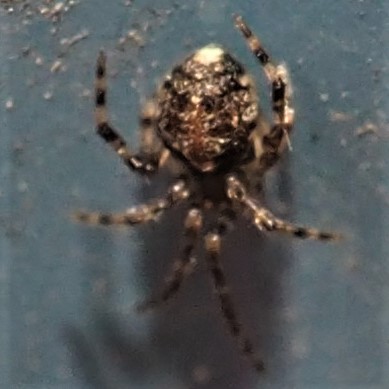
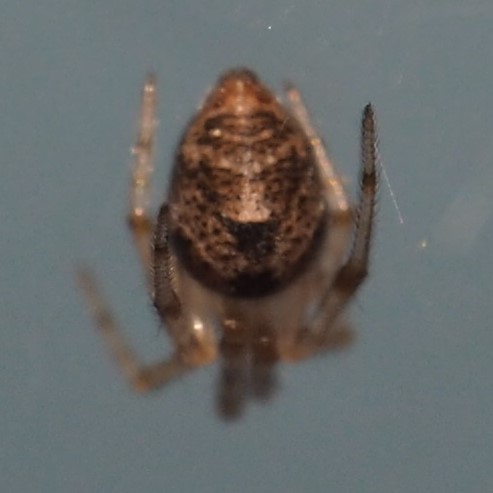
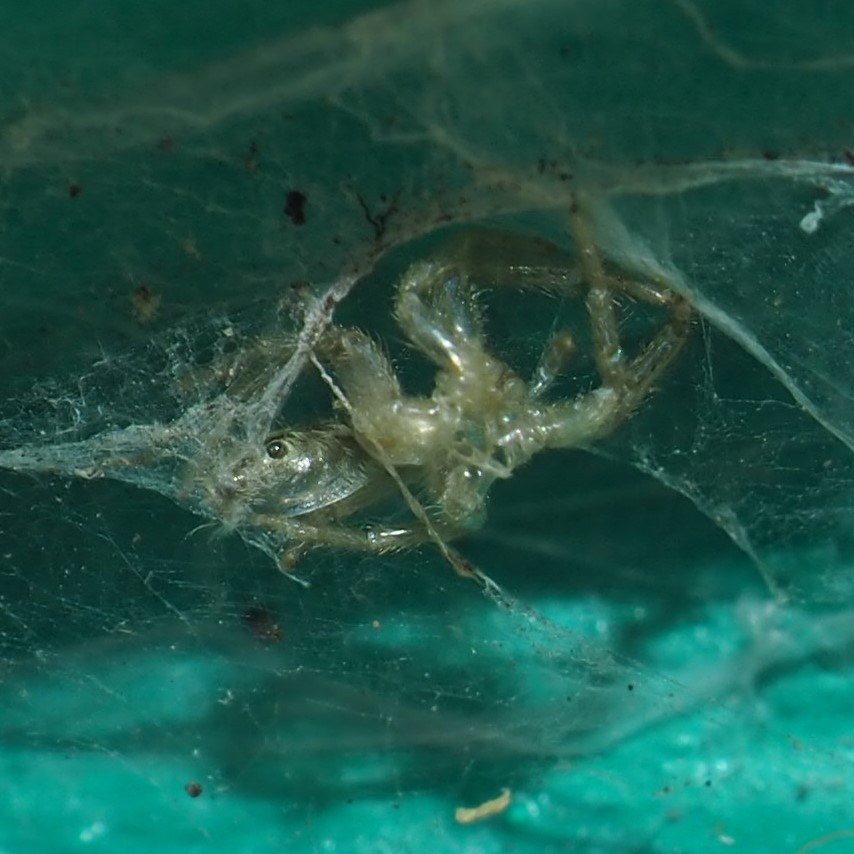
Here's one of those Running Crab Spiders on a window screen. Second is another Crab Spider but much larger than the first one. It's a Ground Crab Spider. I was so surprised to see how long its legs are. I've seen this one before but have never been able to identify it to species. Number 3 is the same Spider, but with its body enlarged.


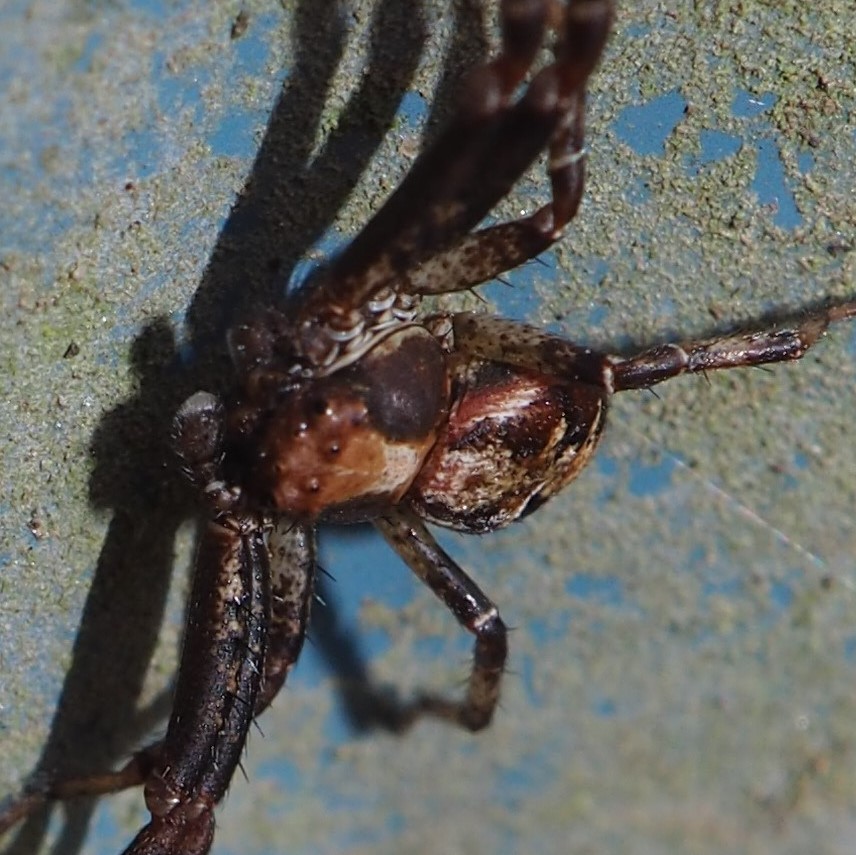
This first one is some kind of Wolf Spider, but I've no idea what species. Then we switch to another plane of existence. This is one of the Slender Springtails, which you'll remember is NOT an insect, although it has six legs!
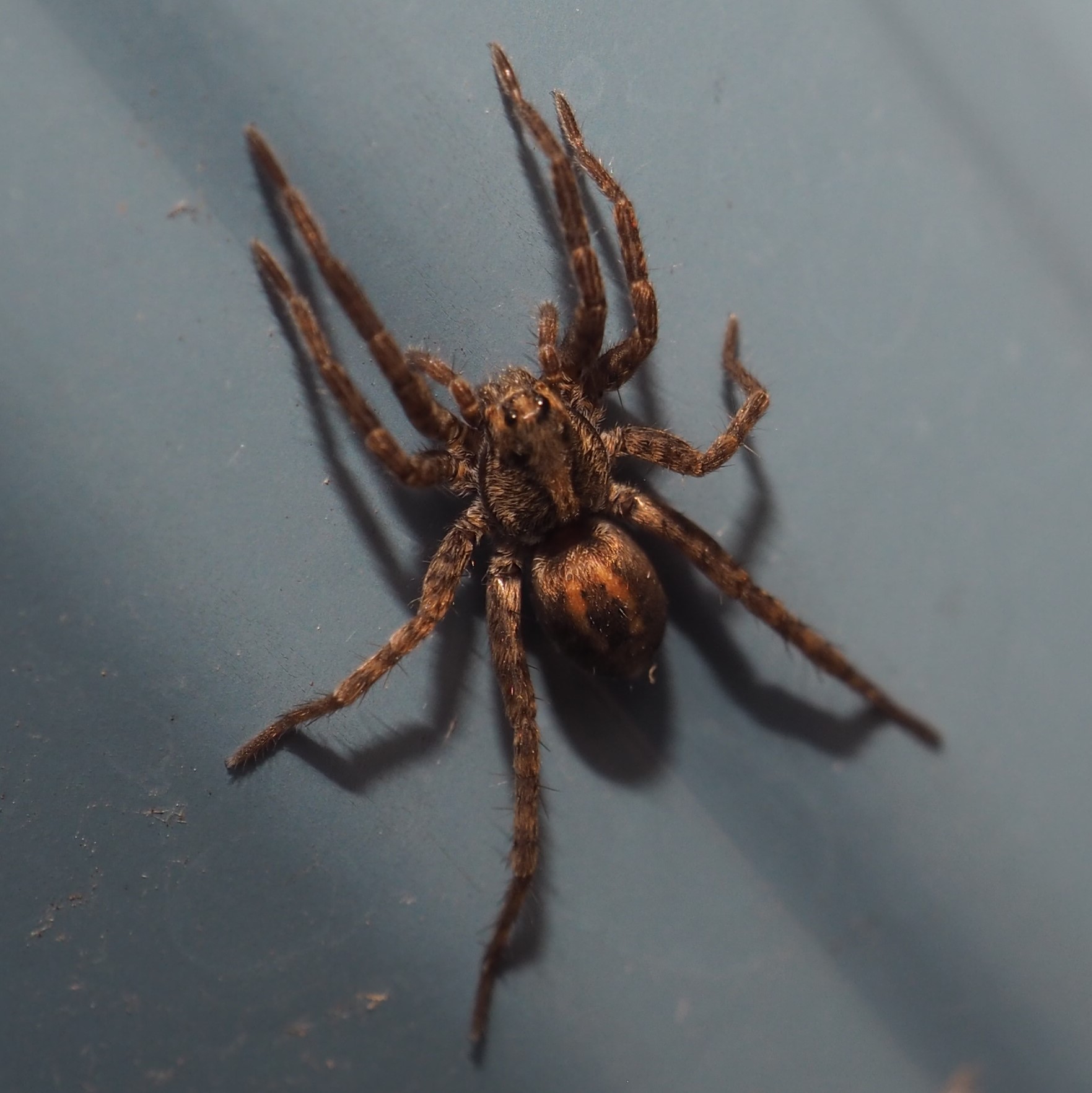
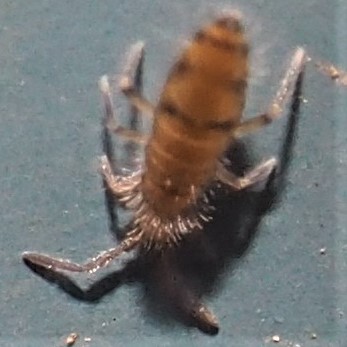
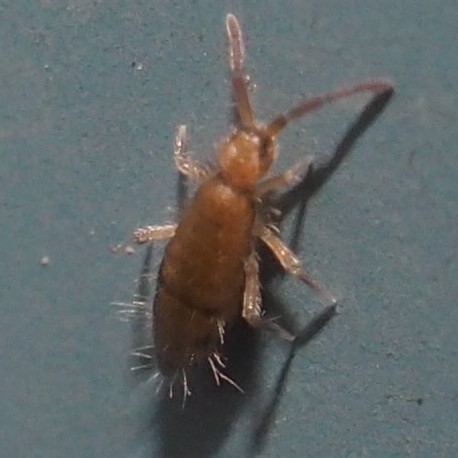
Another oddity. You may ask, why is that Ant so near the other end of the Alphabet? Well, the answer is, it isn't an Ant, but a Flat Wasp. Apparently it is in the Subfamily Scleroderminae, as @kgrebennikov of iNat says.
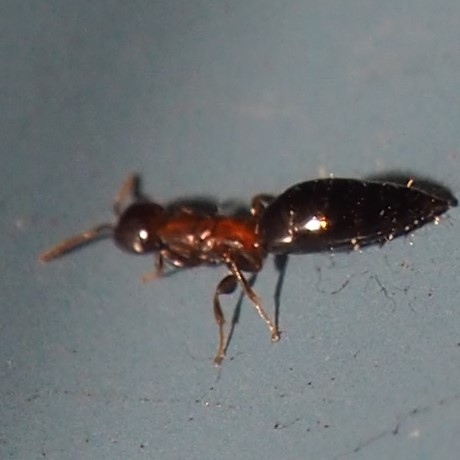
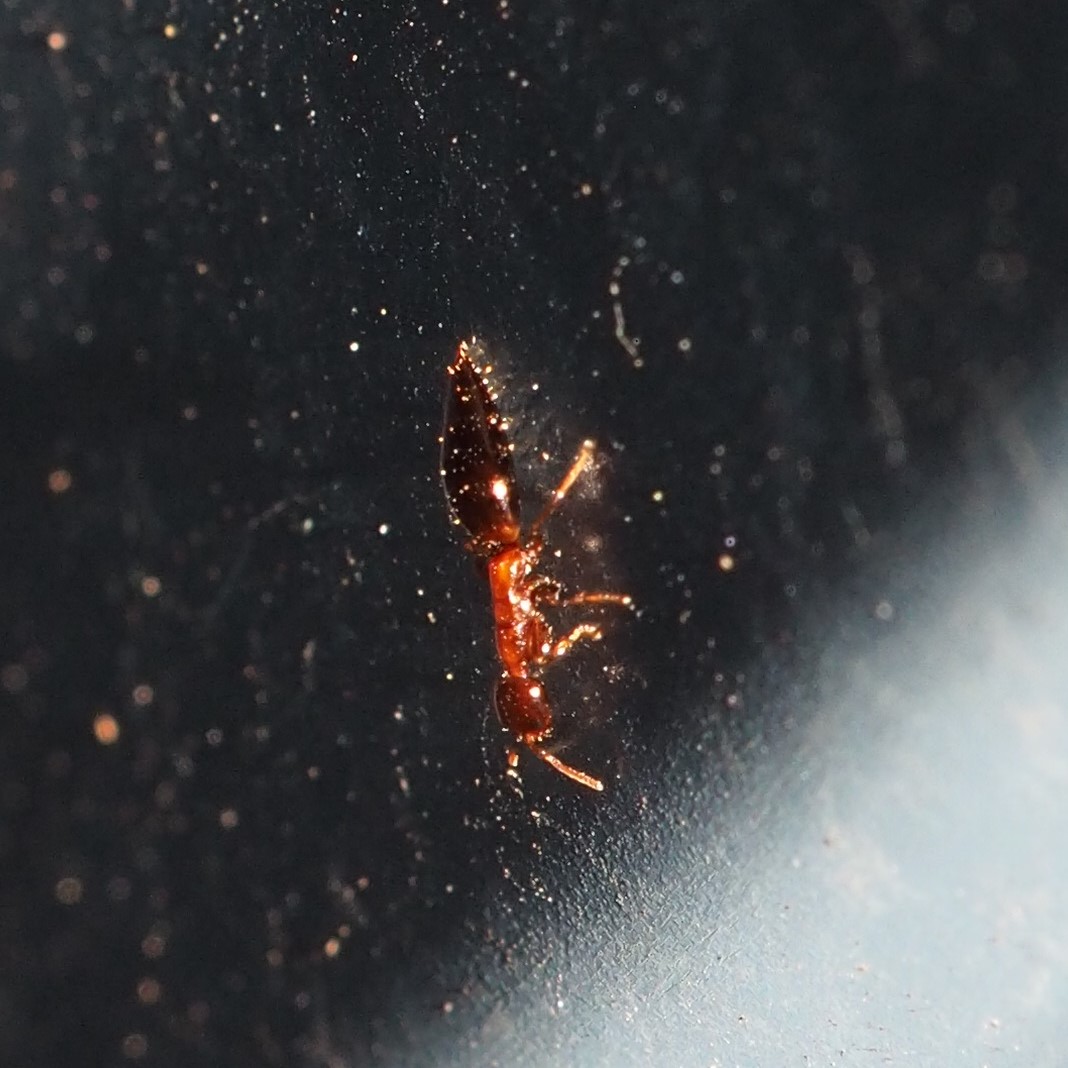
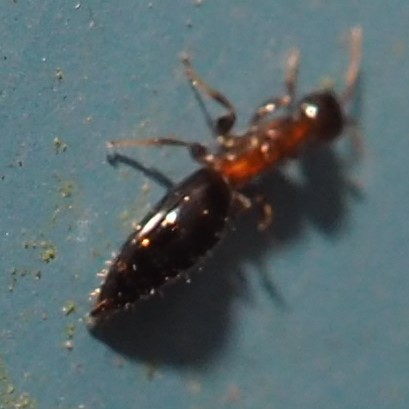
We do have some other Wasps. One is that little fellow called an Encyrtid Wasp. It is so very small that it just looks like a dot running on the shop siding.
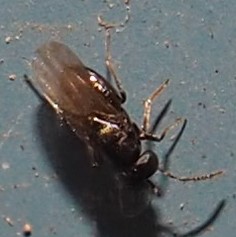
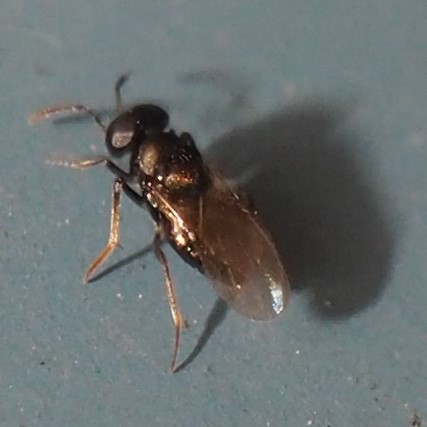

I sat down on Saturday afternoon to get some blogging done and then go back out to see what might have come by. But I couldn't quit. I heard thunder and rain so didn't go out again. When I went downstairs to help get a pizza into the oven, Chaim pointed out that in the short wet and noisy spell the Redbud tree had bloomed!
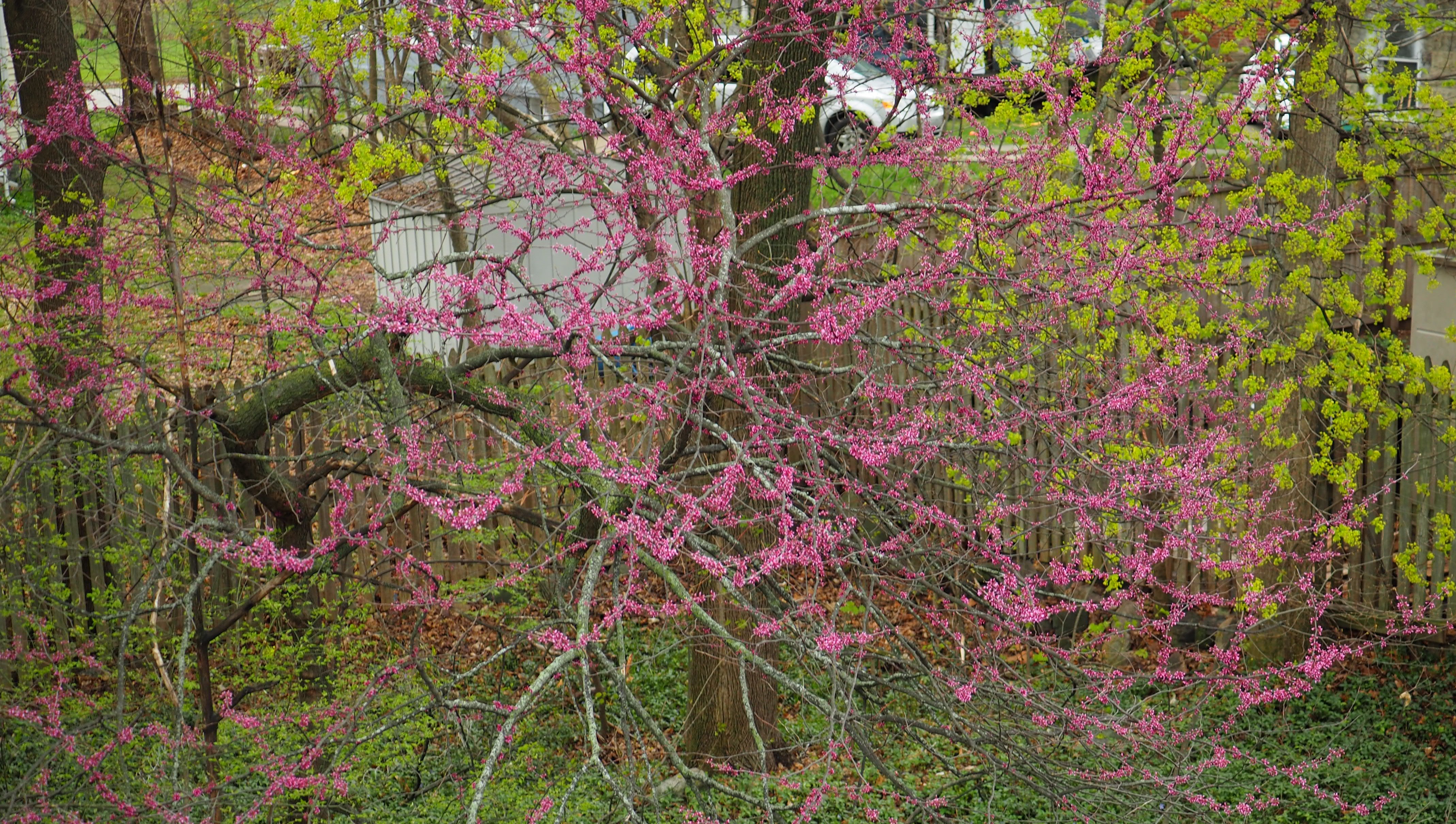
I love it in Spring and in Autumn when the trees that reach up the street are tinged with such subtle variations of color in their little tree flowers (Spring) or leaves (Autumn).
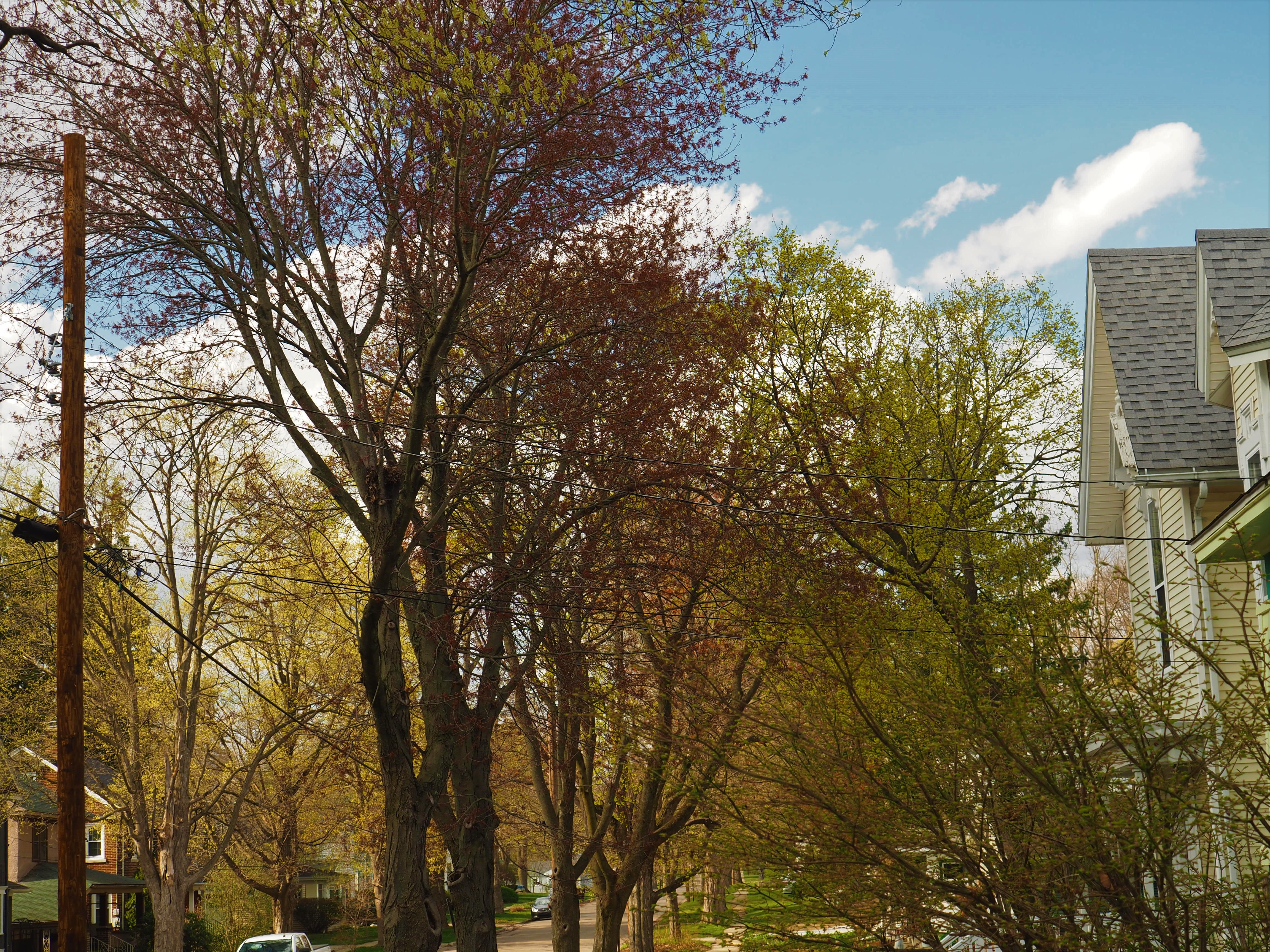
Today's forecast is only for 56 F. Not too cool but not so nice as yesterday before the storm. But WE know about April, don't we? It is another thing to get used to when you move here. A few years after I came here, there were two years in a row when it snowed into the mid-May Graduation punch bowl! Do you remember that?
Has that happened recently?
Love, Martha
PS. Here are some morphs of the redbud tree.
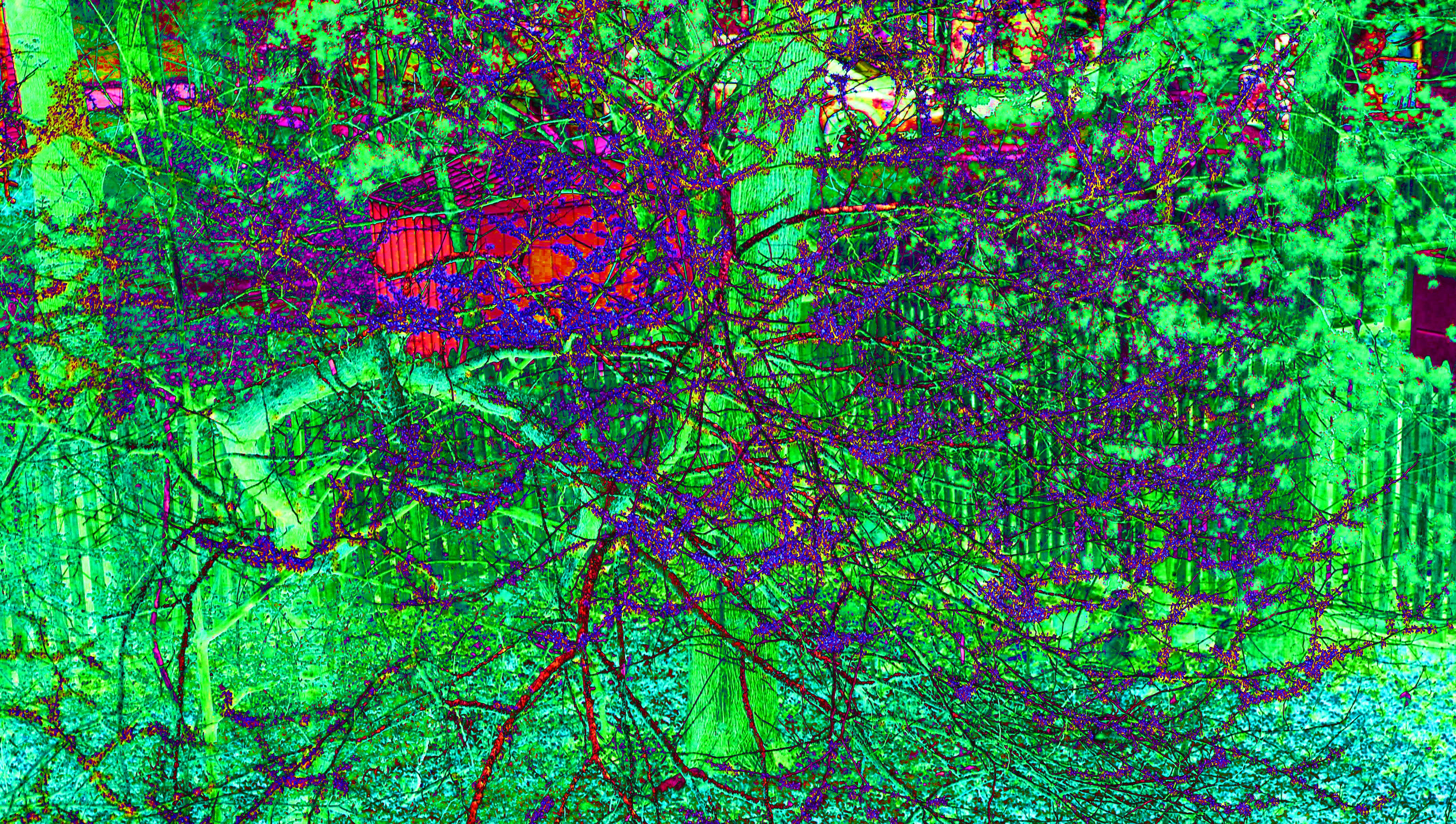
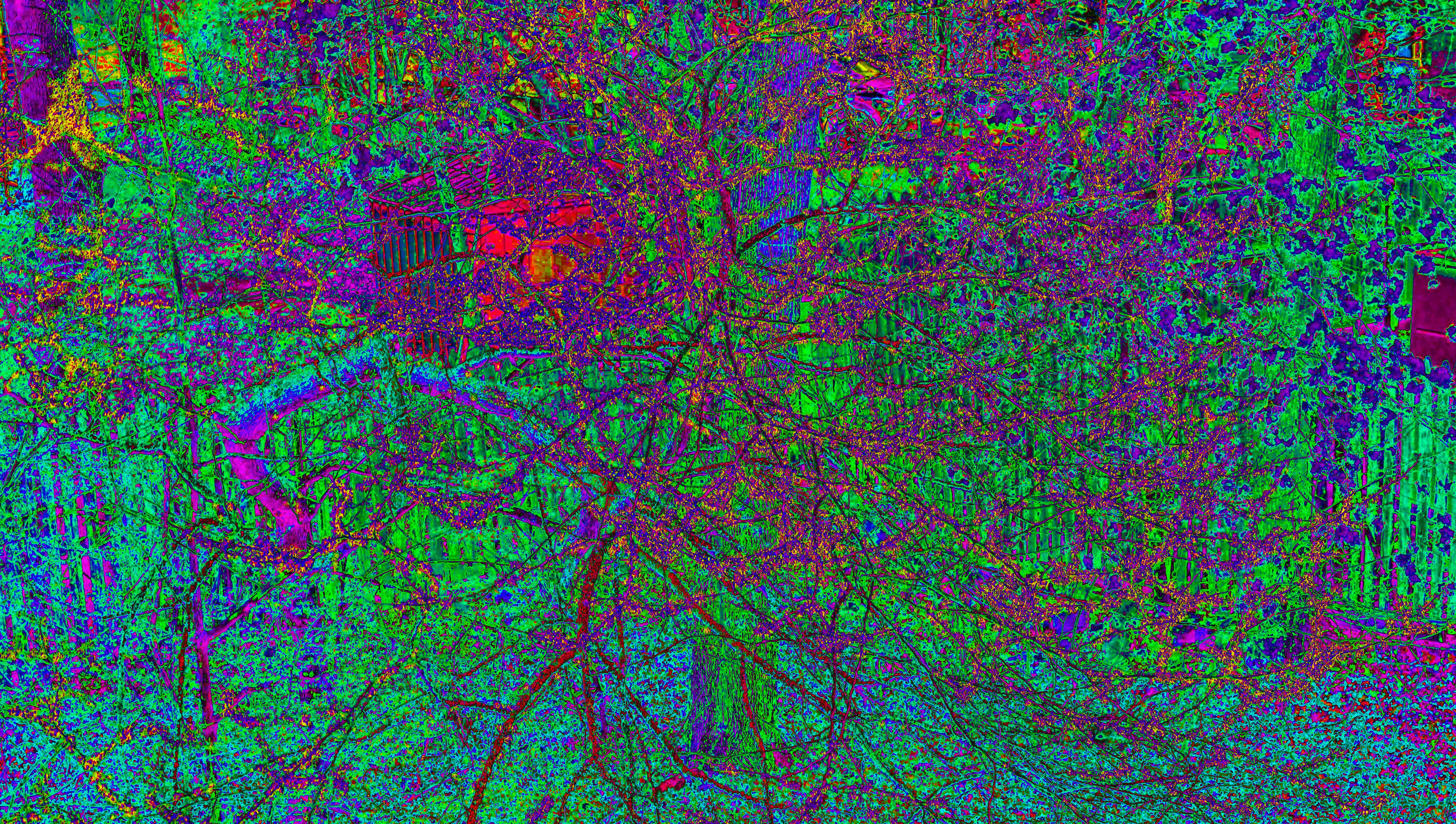
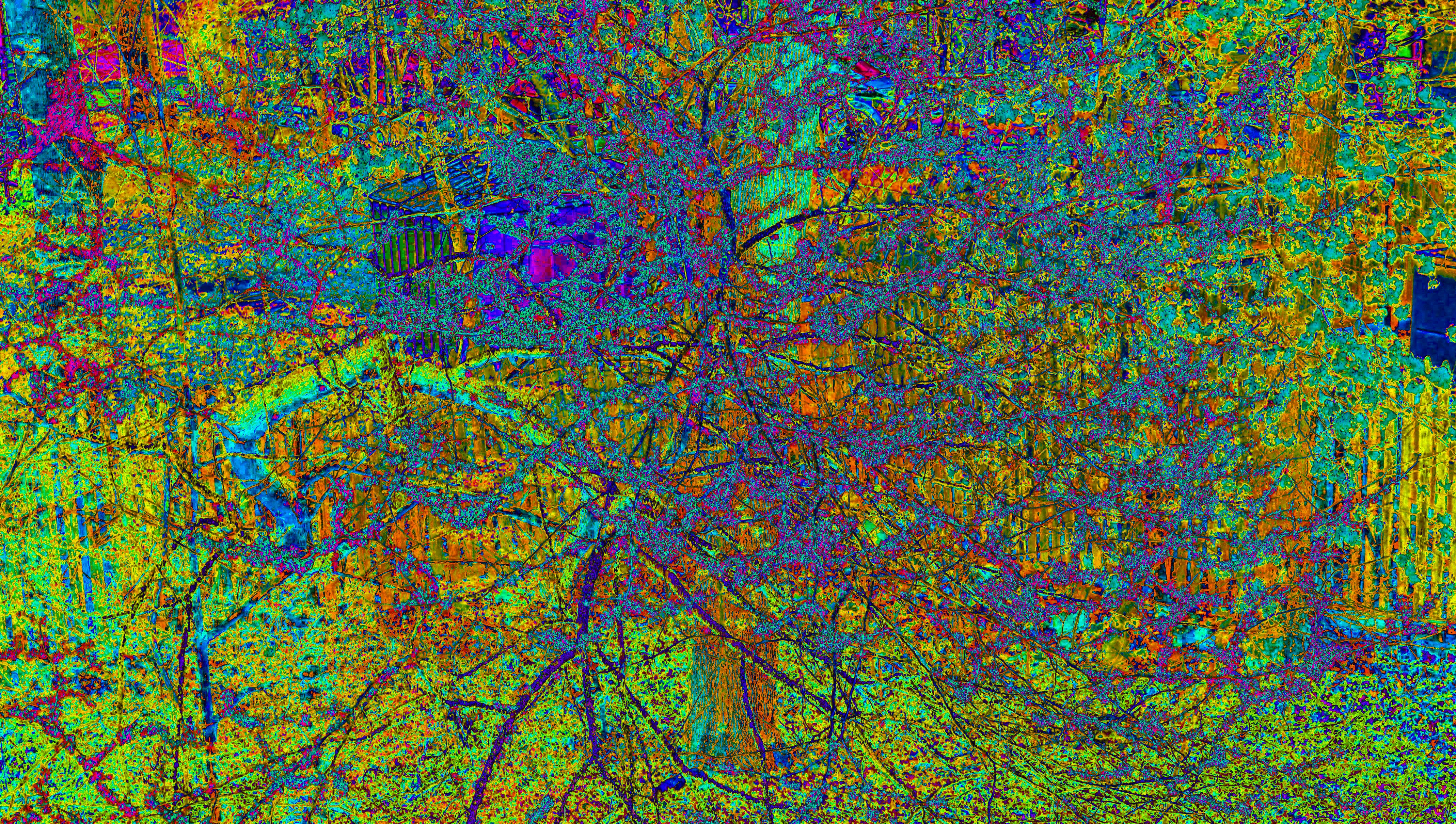
Back to April 4, 2021
Forward to April 18, 2021
Back to main menu
copyright Martha O'Kennon 2021

















































































